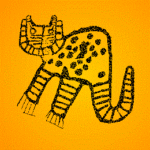 The Majes Valley of southern Peru is well-known for its enormous collection of petroglyphs. A significant diversity of animal species has been depicted on the relatively soft volcanic rocks of those sites. Images of felines are relatively scarce in the Majes Valley, yet they are unexpectedly numerous in absolute terms in the Central Majes Valley. In this study the image of the Majes feline and its graphical anomalies will be discussed, as well as the unexpected distribution pattern of feline imagery in the Majes Valley.
The Majes Valley of southern Peru is well-known for its enormous collection of petroglyphs. A significant diversity of animal species has been depicted on the relatively soft volcanic rocks of those sites. Images of felines are relatively scarce in the Majes Valley, yet they are unexpectedly numerous in absolute terms in the Central Majes Valley. In this study the image of the Majes feline and its graphical anomalies will be discussed, as well as the unexpected distribution pattern of feline imagery in the Majes Valley.
By Maarten van Hoek
*
Contextualising the Unexpected Plethora of Feline Petroglyphs
in the Majes Valley, Peru
*
January 2021 – Revised Version October 2023
*
Maarten van Hoek – rockart @ home.nl
INTRODUCTION
The Majes Valley of southern Peru is well-known for its enormous collection of petroglyphs that are mainly found at the rock art sites of Alto de Pitis and La Laja on the east bank of the Majes River and – at the west bank – Toro Muerto; the largest petroglyph collection in the Andes with an estimated minimum of 50.000 images. A significant diversity of animal species has been depicted on the relatively soft volcanic rocks of those sites, although images of camelids seem to dominate the scene. This camelid dominance is not unexpected, as camelids were the major subsistence source in the whole of the Desert Andes, the extremely arid desert west of the Andes, as well as in the High Andes. Although numerous ancient tracks of llama-caravans have been recorded across the Desert Andes, not a single petroglyph of a feline-track has yet been reported in the rock art repertoire of the Majes Valley.
Compared with the predictable abundance of camelid representations, images of felines are relatively scarce in the Majes Valley, yet they are unexpectedly numerous in absolute terms in the Central Majes Valley. Thus, an unexpected and as yet unexplained distribution pattern of feline imagery emerges. It notably proves that the great bulk of feline petroglyphs is found in a relatively small, restricted area of the valley. Moreover, it will be demonstrated in this study that there are also several striking anomalies in the layout of those Majes feline petroglyphs, some of which may help to explain the plethora of feline images in this area. In this study the image of the Majes feline and its graphical anomalies will be discussed, as well as the unexpected distribution pattern of feline imagery in the Majes Valley (in this study comprising the stretch from Camaná on the Pacific Coast to the archaeological site of Andamayo in the far north of the valley). Finally, throughout this study the prefixes “TM” and “PTM” (Proyecto Toro Muerto) refer to Toro Muerto, while the prefix “AP” refers to Alto de Pitis.
*
PART I
The Majes Feline Petroglyphs
The Majes feline petroglyphs (conveniently ignoring the only one feline-pictograph in the Majes Valley, which is found at Querulpa) most likely depict either the Andean Mountain Cat (Leopardus jacobita) or the Pampas Cat (Leopardus colocola), as the fine details in the Majes feline petroglyphs are similar to the natural fur-decoration of those two species. Notably, in real life the Andean Mountain Cat is characterised by dark spots on the forelimbs and on the flanks, by up to two rings on the hindlimbs, while the long tail has up to nine dark rings. Of course, the graphical inventiveness and the autonomy of the prehistoric rock art manufacturer often resulted in many variations and even aberrant alternatives. The diversity of feline images in Majes rock art is enormous. For instance, in the petroglyphs the spots on the flanks may have been replaced by circles or dot-and-circle motifs and even ∩-shapes, while numbers of spots and rings may well differ from the factual numbers of spots and rings on live cats. Also the tail has been arranged in many different positions. Moreover, tails – like necks and legs – may be very short (or non-existing) or relatively long. Finally, it is almost certain that – because of the conspicuous decoration – no puma has been depicted. However, it is a fact that in many cases animals without spots in real life (like camelids and canines) have also been decorated with spots and circles in Majes rock art. Therefore, although I think it is unlikely, pumas could have been depicted in rare cases after all, but in view of the essence of this study it is not really relevant whether a puma has been depicted in some cases or not.
Both cat species typically live at high altitudes in the Andes and are only rarely spotted at much lower elevations. Interestingly, although felines are only infrequently spotted in the in the Central Majes Valley and neighbouring pampas and valleys, petroglyphs of felines are relatively common in Majes Style rock art. However, it will be demonstrated that there is an unexpected overrepresentation and an unexpected distribution pattern of feline rock art images in the Central Majes Valley, which must have specific reasons. Importantly, one of the reasons may be that the Andean Mountain Cat (and perhaps the Pampas Cat as well) is traditionally considered a sacred animal by indigenous Quechua speaking peoples of the ancient Andean world. This worldview is also reflected in the rock art of the Paracas-Nasca sphere further to the NW along the Peruvian coast, where similar feline images have been recorded by me. In the worldview of the Paracas-Nasca cultures the feline dominated the land, the hills and the mountains.
However, the general Andean worldview does not explain the overabundance of feline rock art images in the Central Majes Valley (for location see Figure 23); a small area including the flood plain between the village of Punta Colorada and the hamlet of El Dique, ten kilometres further north, and the neighbouring desert slopes on both sides of the flood plain, which incorporate – on the west side – the rock art sites of Punta Colorada, Toro Muerto and Quebrada Pampa Blanca and – on the east side – Alto de Pitis.
Except for some exceptional exceptions, Majes feline petroglyphs are all outlined. In most instances the outlining grooves are mainly pecked or hacked, but sometimes (mainly partially) incised, especially the fine details. The rare fully pecked examples suggested to depict felines are doubtful. These could comfortably represent another species of quadrupeds. In one case (on Panel TM-Bf-048A) it looks as if a feline petroglyph is fully pecked, but this proves to be a case of later obliteration, as very faintly some circular elements of the original body decoration are still visible (Figure 1). Finally, it seems that feline representations within the Study Area have in general been depicted with two legs, although there occur some very strange anomalies in this respect.
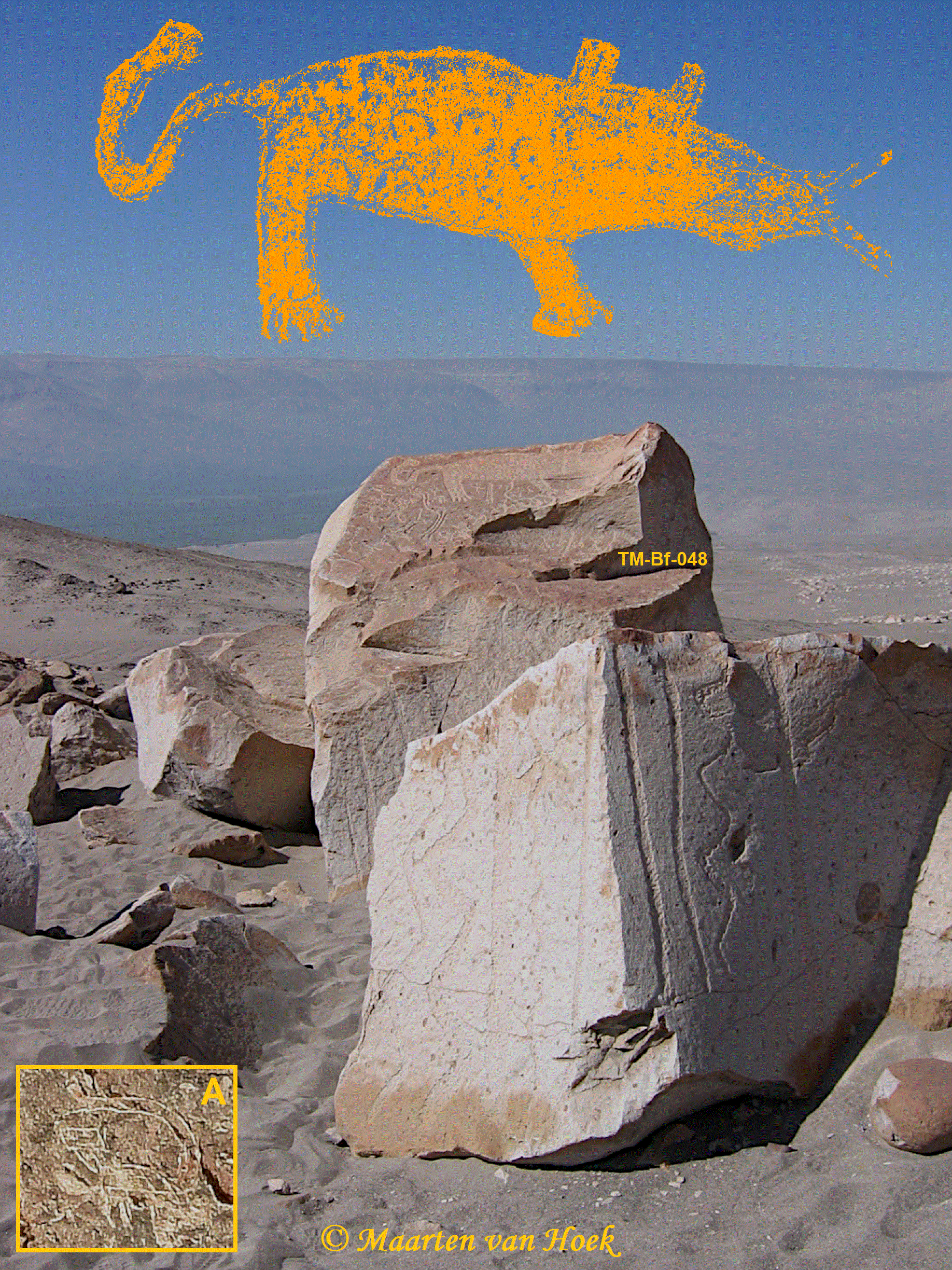
Figure 1. Boulder TM-Bf-048 with (on its top) the petroglyph of an obliterated feline, estimated by me to be just over 60 cm. Photograph and drawing © by Maarten van Hoek. Inset A: Incised petroglyph of a feline on Boulder QPB-Ny-001 at Quebrada Pampa Blanca, estimated by me to measure no more than 4 cm. Photograph (enhanced by me) © by James Posso Sánchez.
*
To see a larger version of each Figure, right-click on the Figure to open it in a new window and (if necessary) enlarge the illustration. To go back to the paper, close the new window.
Three Categories of Majes Felines
The typical Majes feline is laterally depicted with, however, one salient irregularity. Notably the most conspicuous characteristic of this category is that the head of the typical Majes feline is always frontally depicted. This means that the whole animal is depicted in “twisted” perspective and thus the facial features (ideally including two eyes, one nose, one mouth, one set of whiskers and two ears) are all facing the observer; an otherwise normally occurring pose for cats in real life. In many instances however one or more (or even all; see for instance Figure 34E) facial features have (often intentionally) been omitted by the prehistoric manufacturer (Figure 2). This may have been done accidentally (thus without a specific purpose) or it may have been decided for as yet unknown reasons to intentionally omit some or even all facial features. Perhaps in one instance at Toro Muerto – on Panel TM-Bf-010B – a fully frontally depicted feline might have been intended, but more likely it concerns an unfinished example (see Figure 34B). Also at Alto de Pitis – on Panel AP3-078A – a petroglyph seems to have been intended to represent a frontally depicted feline.
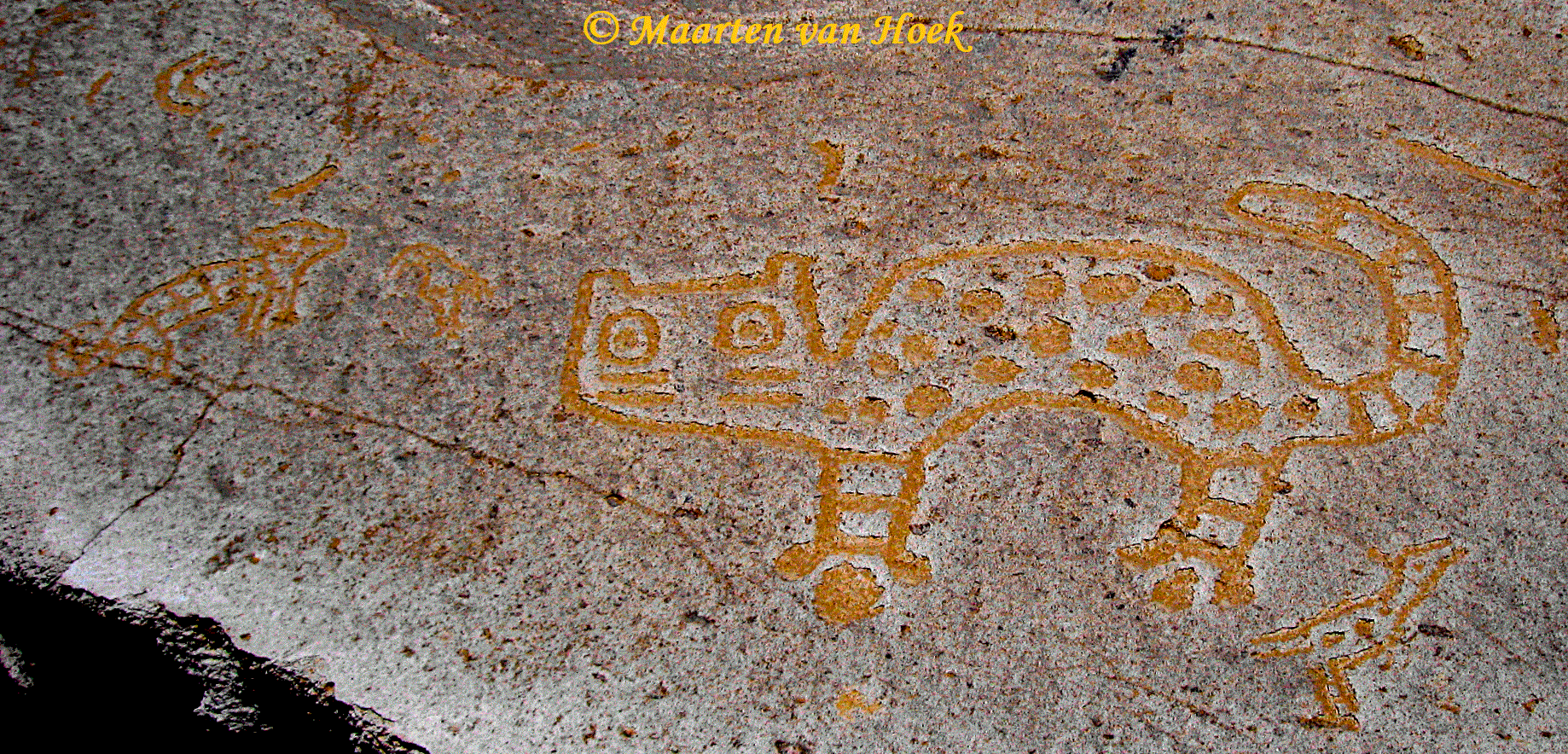
Figure 2. Boulder TM-Ab-018 with the petroglyph of a typical Majes feline intentionally drawn without mouth and nose. Photograph © by Maarten van Hoek (much enhanced).
The mouth only very rarely shows (small) teeth (Figure 3), while fangs are always absent in typical Majes feline depictions, although the single element in the mouth of the fully laterally depicted, atypical feline (?) on Boulder TM-Bd-002 might depict a tooth; possibly even a fang (Figure 4). Because of the numerous much differing designs, it is certain that those “twisted” perspective felines have been made by different manufacturers at different times.
The second type of the Majes feline concerns fully laterally depicted animals, which are relatively rare. In fact this concerns a regional statistical anomaly for only the Majes Rock Art Style, as in Andean rock art in general felines are quite often depicted fully laterally. Moreover, also the representation of those fully laterally depicted felines varies enormously, which again most likely points to chronological distances. A unique specimen concerns the petroglyph recently photographed by James Posso Sánchez from Arequipa on Boulder QPB-Nz-001 at the rock art site of Quebrada Pampa Blanca (Van Hoek 2020), located on an ancient route, five kilometres north of Toro Muerto. This feline petroglyph is unique for convincingly having a fang that is pointing downwards from the upper jaw (indicated by the golden arrow in Figure 5). Moreover, the design of the profile head plus the fang is drawn in the MSC-Style and therefore points to a likely Formative Period origin and thus it may represent one of the earliest symbols of a feline cult in the Majes Valley. Further examples of fully laterally depicted felines have been recorded by me on Boulders TM-Ba-001, TM-Bd-002 (see Figure 4) and TM-Dx-008 (see Figure 8). Because of the curved tail and the digits, the fully laterally depicted quadruped on Boulder TM-Cd-008 may also depict a feline (see Figure 34A), but the head is not feline-looking.
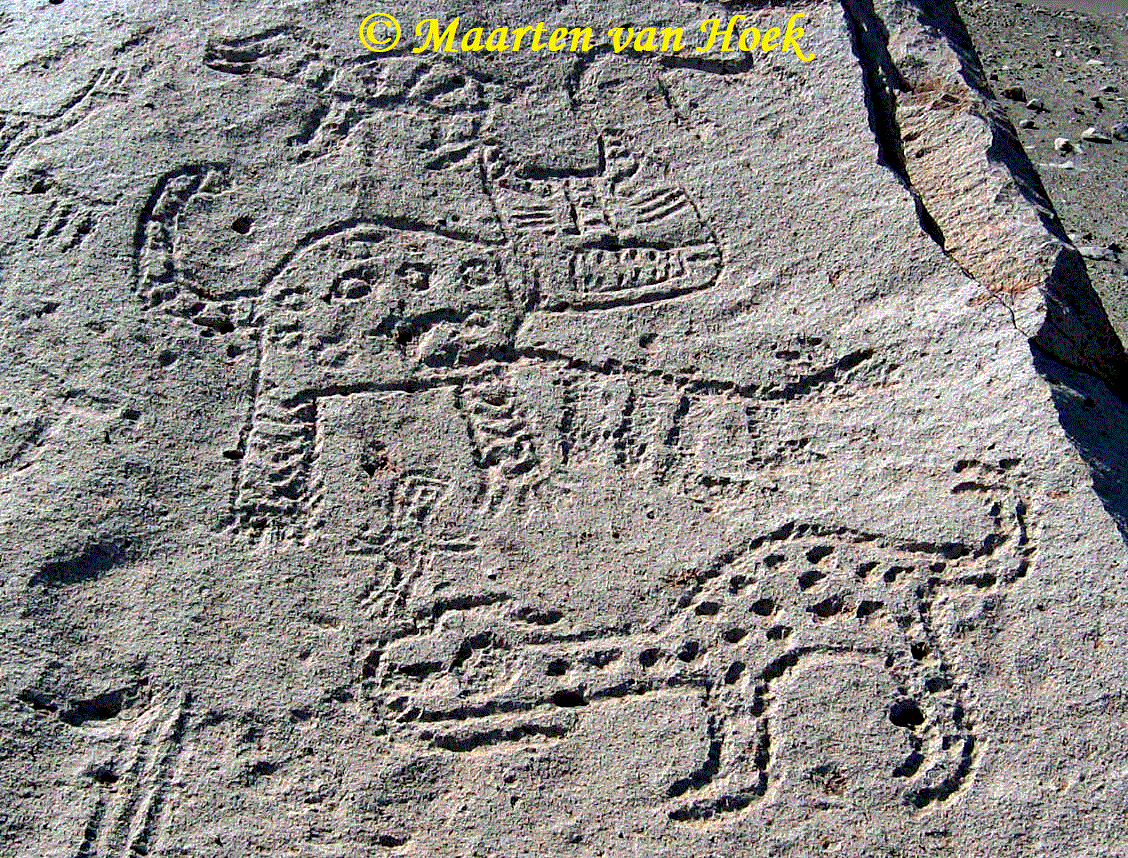
Figure 3. Boulder TM-Dx-019 with the petroglyph of a typical Majes feline with mouth and teeth. Photograph © by Maarten van Hoek (enhanced).
The third group concerns images of Majes felines that are actually hard to classify. Fine examples of this category were once discovered (somewhere in Arequipa) pyro-engraved on small parts of cane (Van Hoek 2018a: Figs 66 and 76). A group of three playing (?), hard to classify felines has been recorded by me on Boulder TM-Ac-008 (Figure 6). Also included in this category are petroglyphs where the face of the feline (and sometimes the whole body) has intentionally been obliterated by later prehistoric manufacturers of rock art (Van Hoek 2005). Ritual obliteration may be an important aspect to explain the localised plethora of felines.
*
Aberrant Feline Designs
It is remarkable that several images of Majes felines contain a deviant and even illogical feature, occasionally involving an unnatural-looking element or pose. Starting at the bottom end of the animal, the tail may be exceptionally long, like in the profile (?) cat on Panel TM-Bb-009A (Figure 7), or extremely short, like in the fully laterally depicted cat on Boulder TM-Dx-008 (Figure 8).
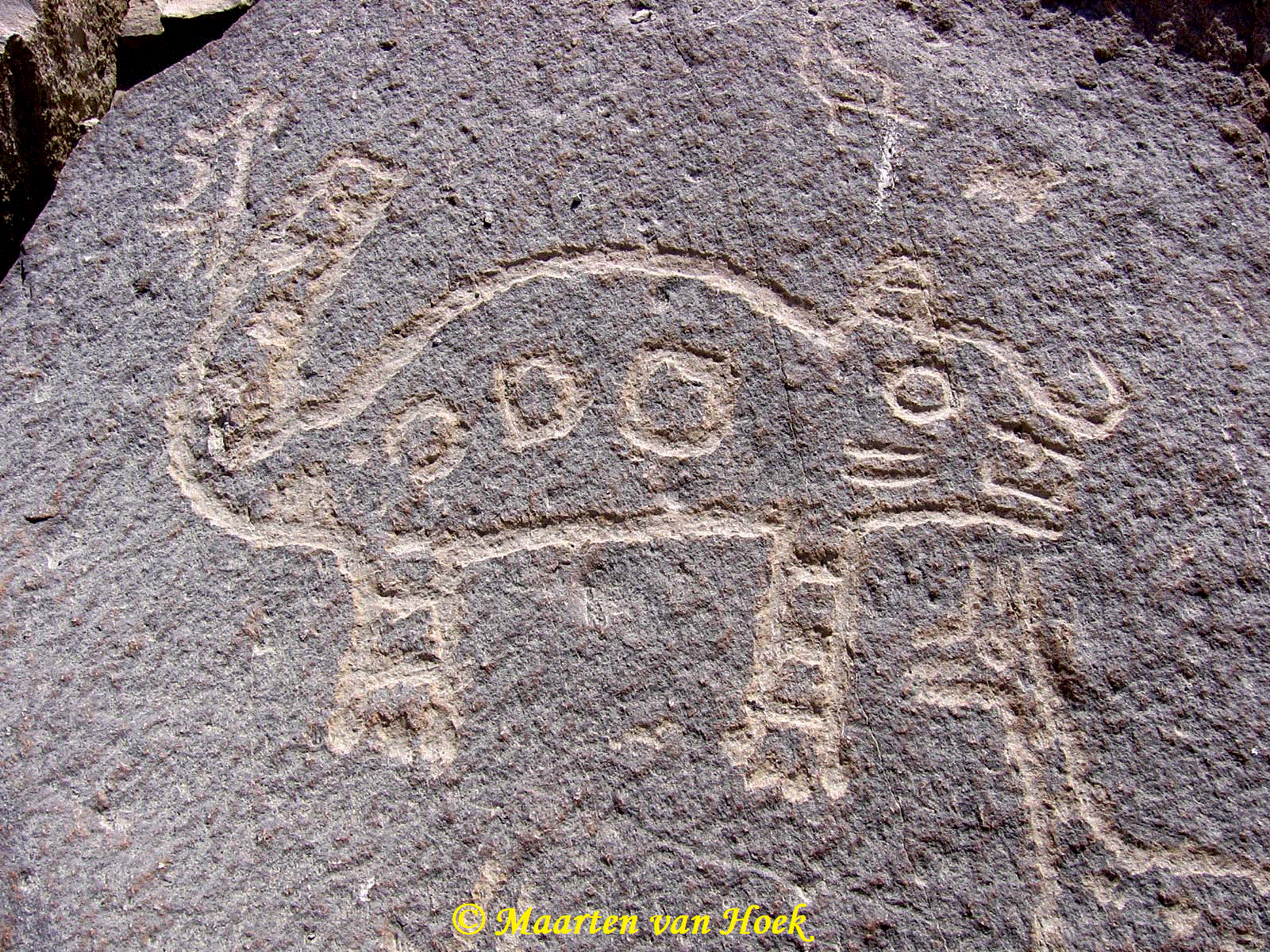
Figure 4. Boulder TM-Bd-002 with the petroglyph of a profile Majes feline with open mouth (and one teeth or fang?). Photograph © by Maarten van Hoek (enhanced).
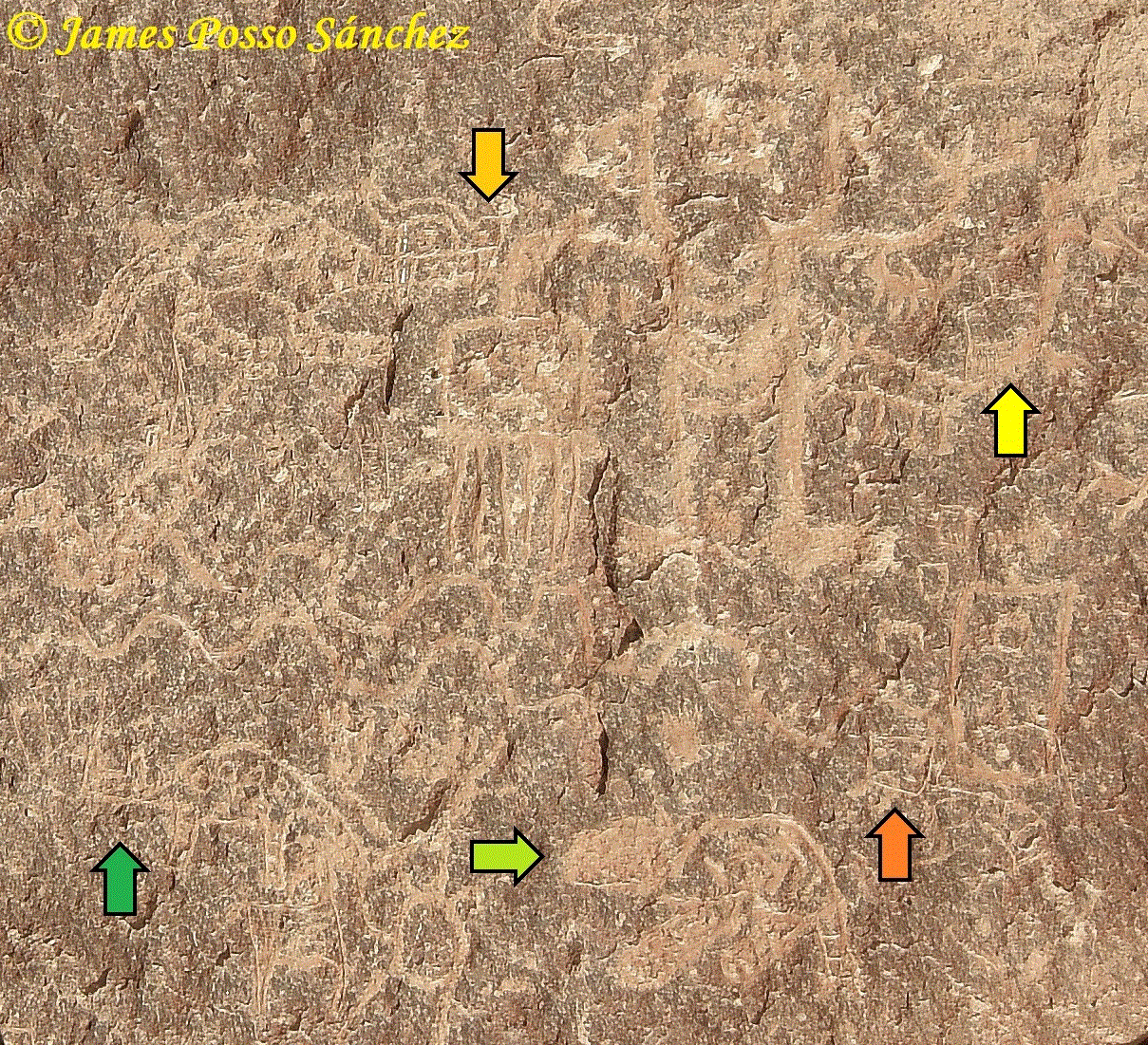
Figure 5. The petroglyph of an ancient profile Majes feline with fang (golden arrow) on Boulder QPB-Nz-001 at Quebrada Pampa Blanca. Photograph © by James Posso Sánchez (enhanced by the author).
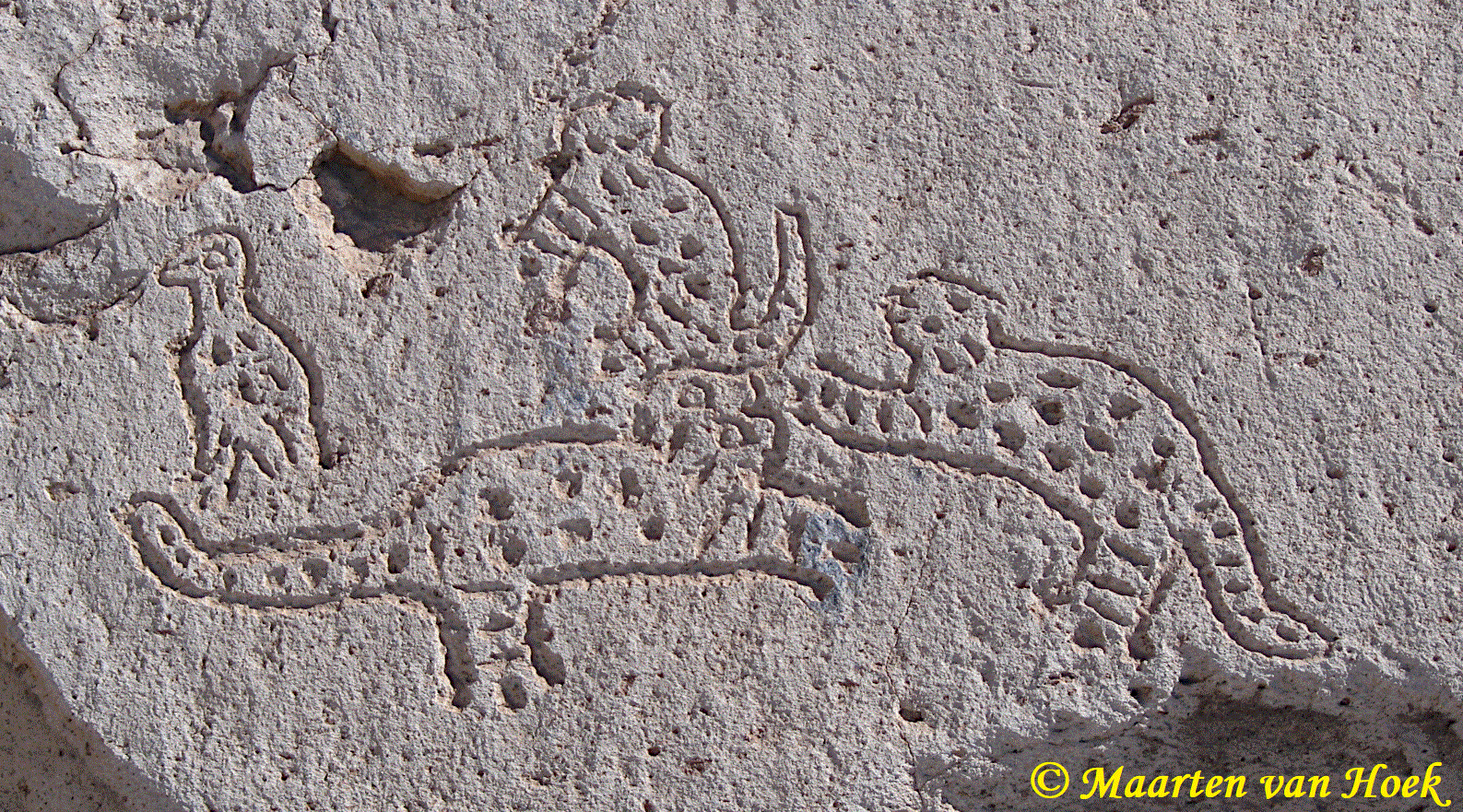
Figure 6. Three petroglyphs of hard to classify Majes felines on Boulder TM-Ac-008. Photograph © by Maarten van Hoek (enhanced).
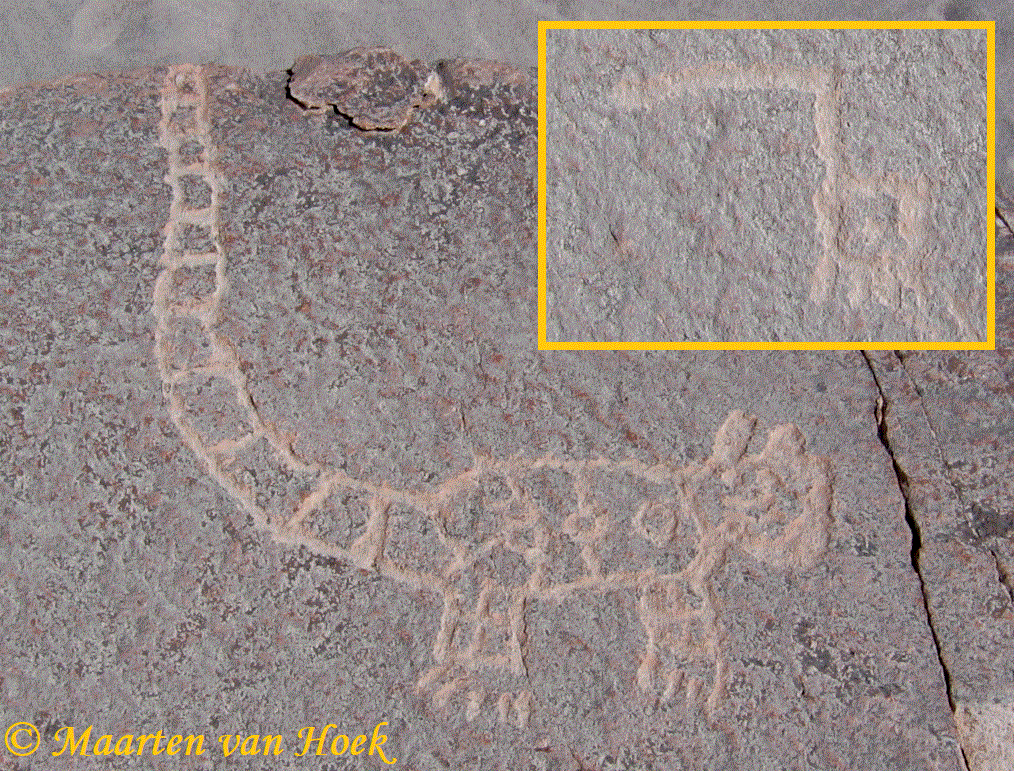
Figure 7. Petroglyph of a hard to classify Majes feline on Panel TM-Bb-009A. Inset: Petroglyph of a “trophy” head plus carrying cord on the same panel. Photographs © by Maarten van Hoek (enhanced).
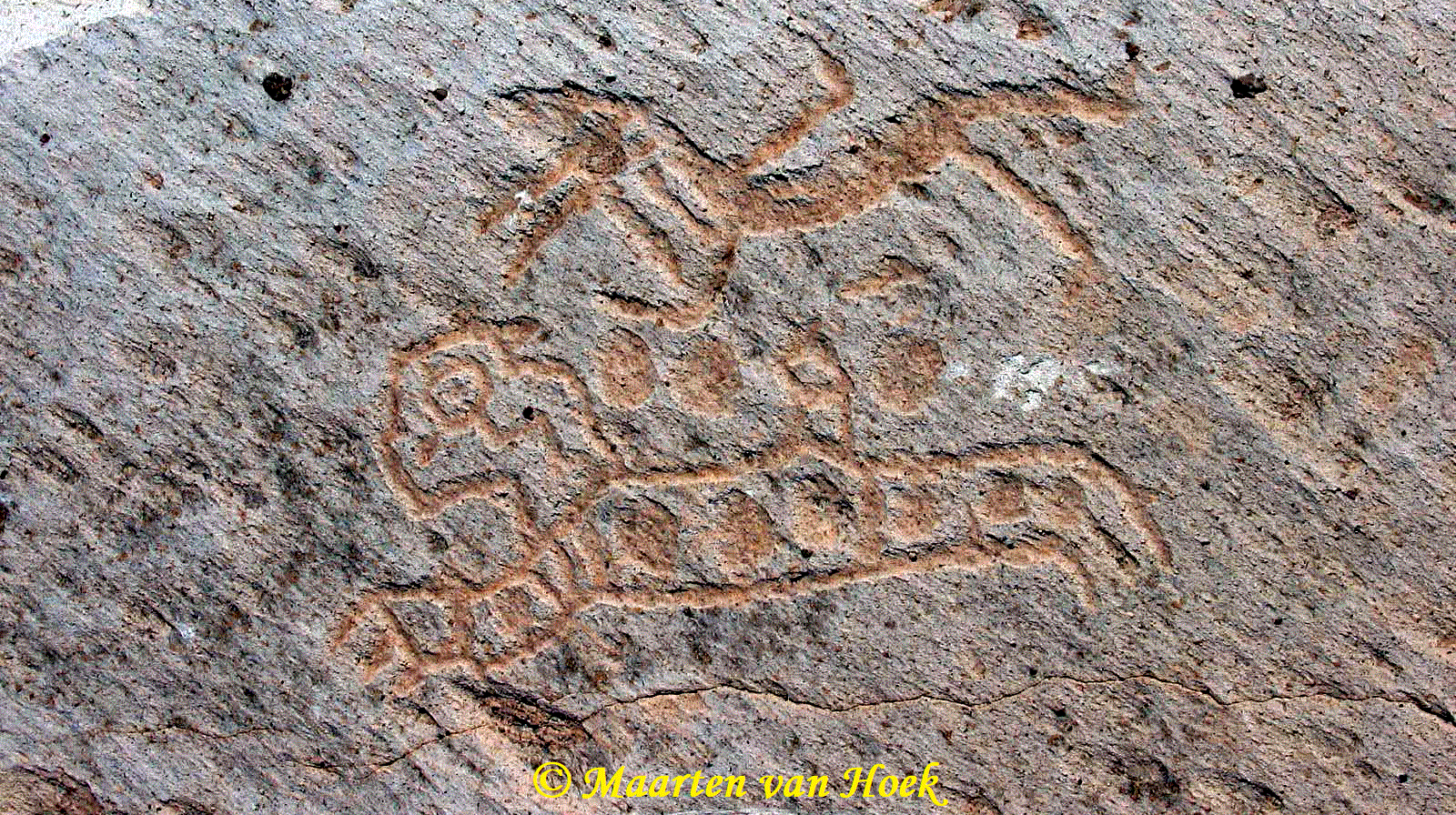
Figure 8. Petroglyph of a profile Majes feline on the horizontal upper surface of Boulder TM-Dx-008. Photograph © by Maarten van Hoek (enhanced).
Also the layout, the number and the position of feline legs involve idiosyncrasies. For example, the oddly shaped, yet outlined feline on Panel AP1-033B also has two fully, carefully pecked legs and paws (see Figure 34F). A similar situation is found at the feline with a very idiosyncratic head in the “twisted perspective position on Boulder AP4-040. However, in this case the legs and paws may have been ritually obliterated at a later stage. The feline on Panel AP3-082A has its legs and head emerging from the front part of its rather deformed body (Figure 9). The feline on Boulder TM-Da-008 has a very short tail and no front legs. It might represent an unfinished example, images of which occasionally occur in the rock art of the Central Majes Valley (see Figure 9 and also Figure 33). Interestingly, most unfinished feline petroglyphs started by executing the head, but in one instance (on Boulder TM-Ab-006) it is the head that is missing (see Figure 33). Also unfinished felines may be part of the explanation regarding the feline plethora. One feline on Panel AP3-083B seems to have only two front legs, while the feline to its right seems to have one front leg only (Figure 10). The front leg of the oddly shaped feline on Panel AP1-033C has its front leg emerging from its chin (Figure 11), while the feline on Boulder TM-Ba-031 has a third, short leg emerging from its chest (Figure 12). Finally, the feline on Boulder PTM-282 has three legs emerging from the body (Figure 13).
Also the head and neck show peculiarities. In several cases the head emerges illogically from the body, like the cat with the small mouth on Boulder TM-Ac-002 (Figure 14) and the framed ensemble of a cat encircled by three birds on Panel TM-Ba-002B (Figure 15; see also Figure 34F). The framed head of the felines on Panel AP3-069B (Figure 34H) and Panel AP3-091A are most likely of Paracas origin (Van Hoek 2018a). Perhaps very informative are the images of felines that seem to show a collar, for instance on Boulder TM-Bc-026 (Figure 16) and in one case (on Panel TM-Ba-014A) even a collar and a possible leash (see Figure 27; inset). Even more telling is the feline petroglyph on Boulder TM-Bc-003 that seems to combine its head with the hair of a severed (human?) head thus possibly creating a “trophy-cat” (see Figure 21).
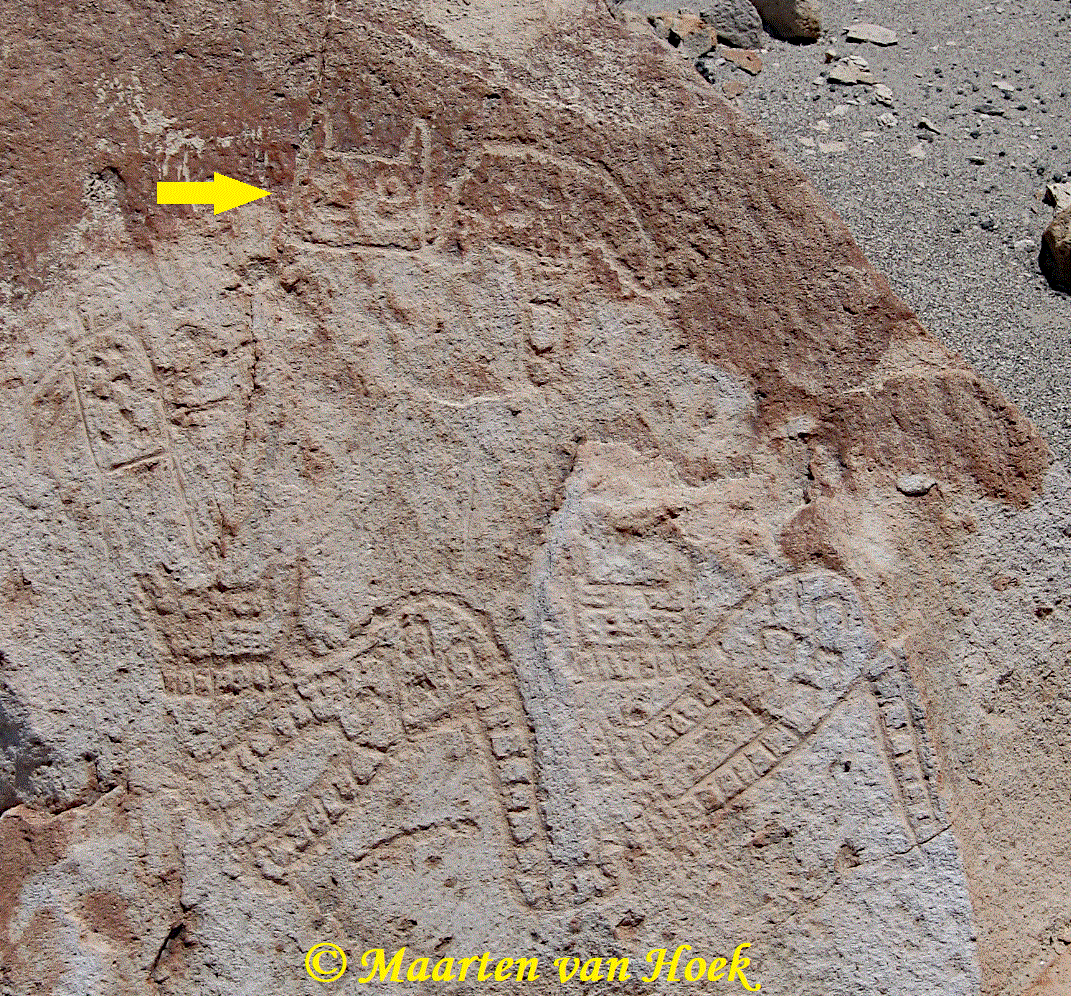
Figure 9. Petroglyphs of three Majes felines on Panel AP3-082A. Note the third, unfinished feline petroglyph at the top. Photograph © by Maarten van Hoek (enhanced).
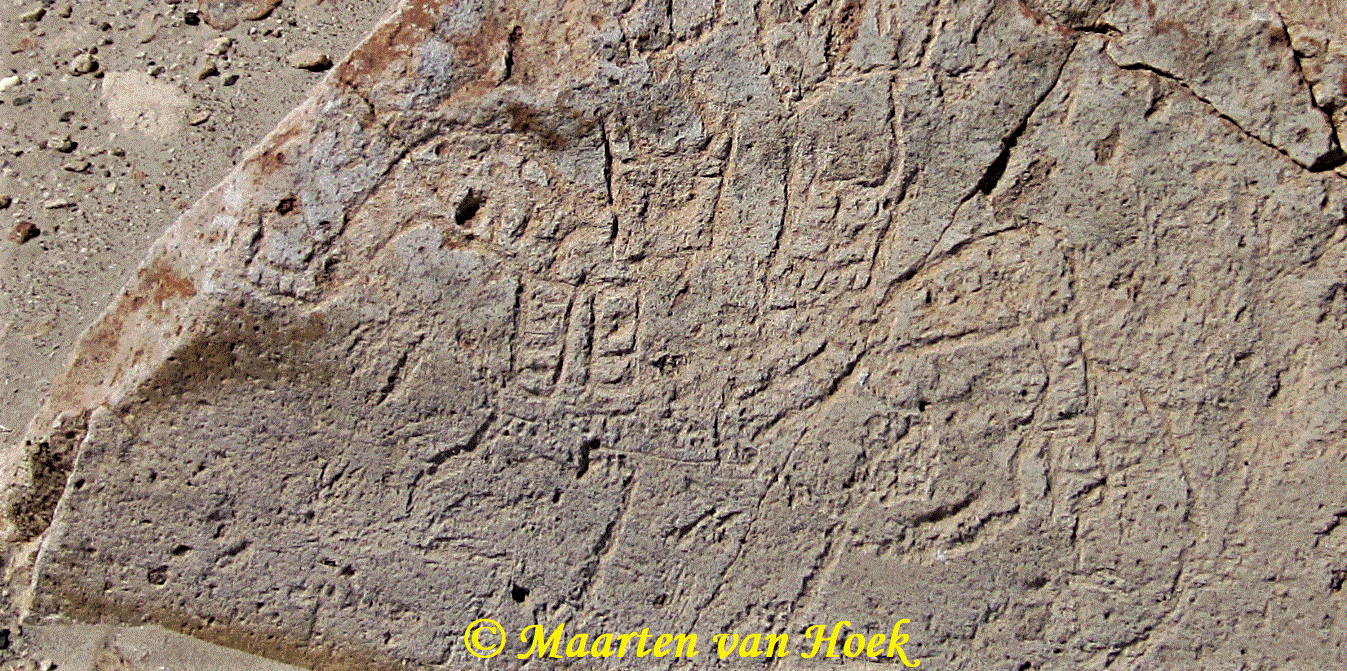
Figure 10. Petroglyphs of two Majes felines on Panel AP3-083B. Photograph © by Maarten van Hoek (enhanced).
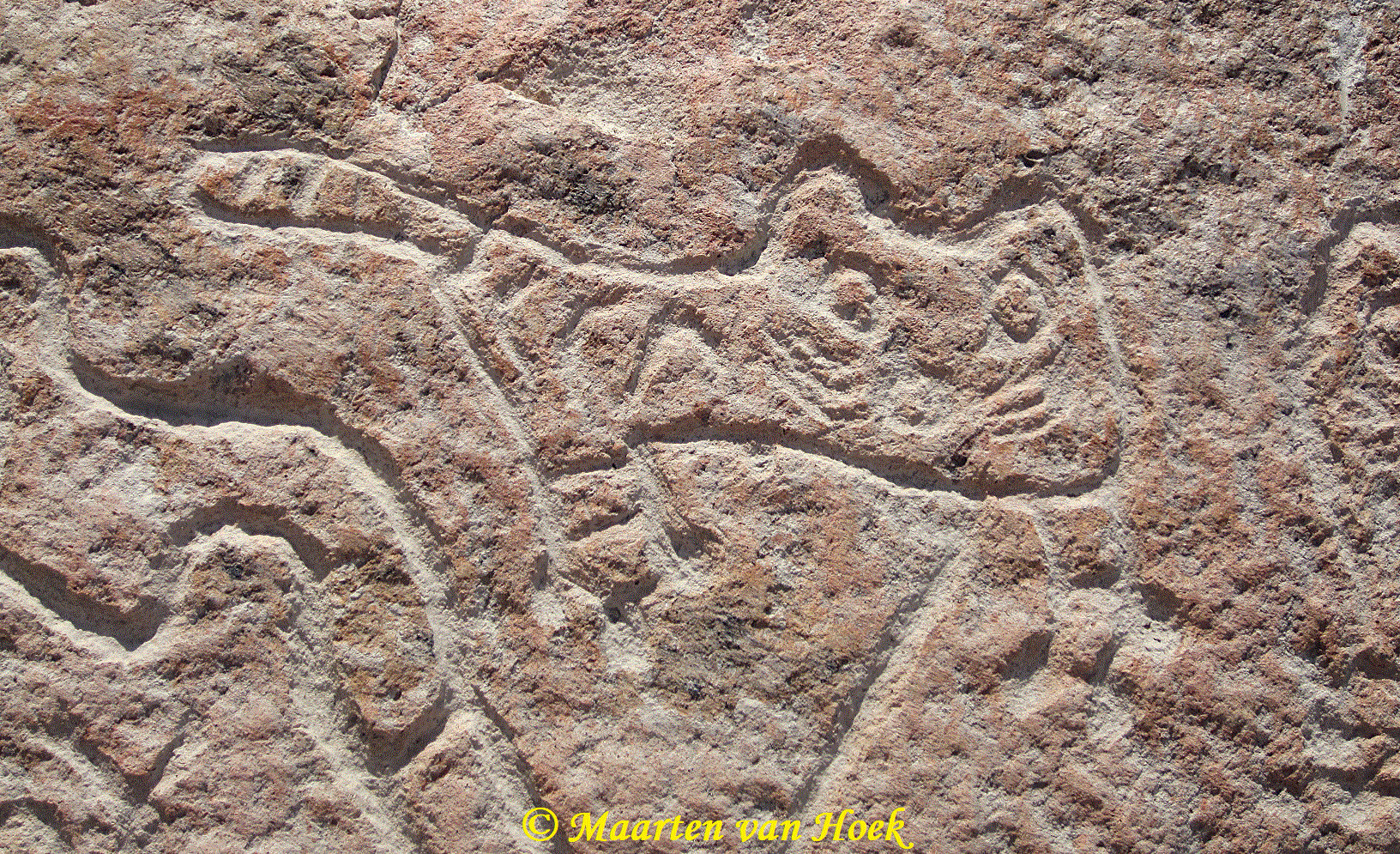
Figure 11. Petroglyph of a Majes feline on Panel AP1-033C. Photograph © by Maarten van Hoek (enhanced).
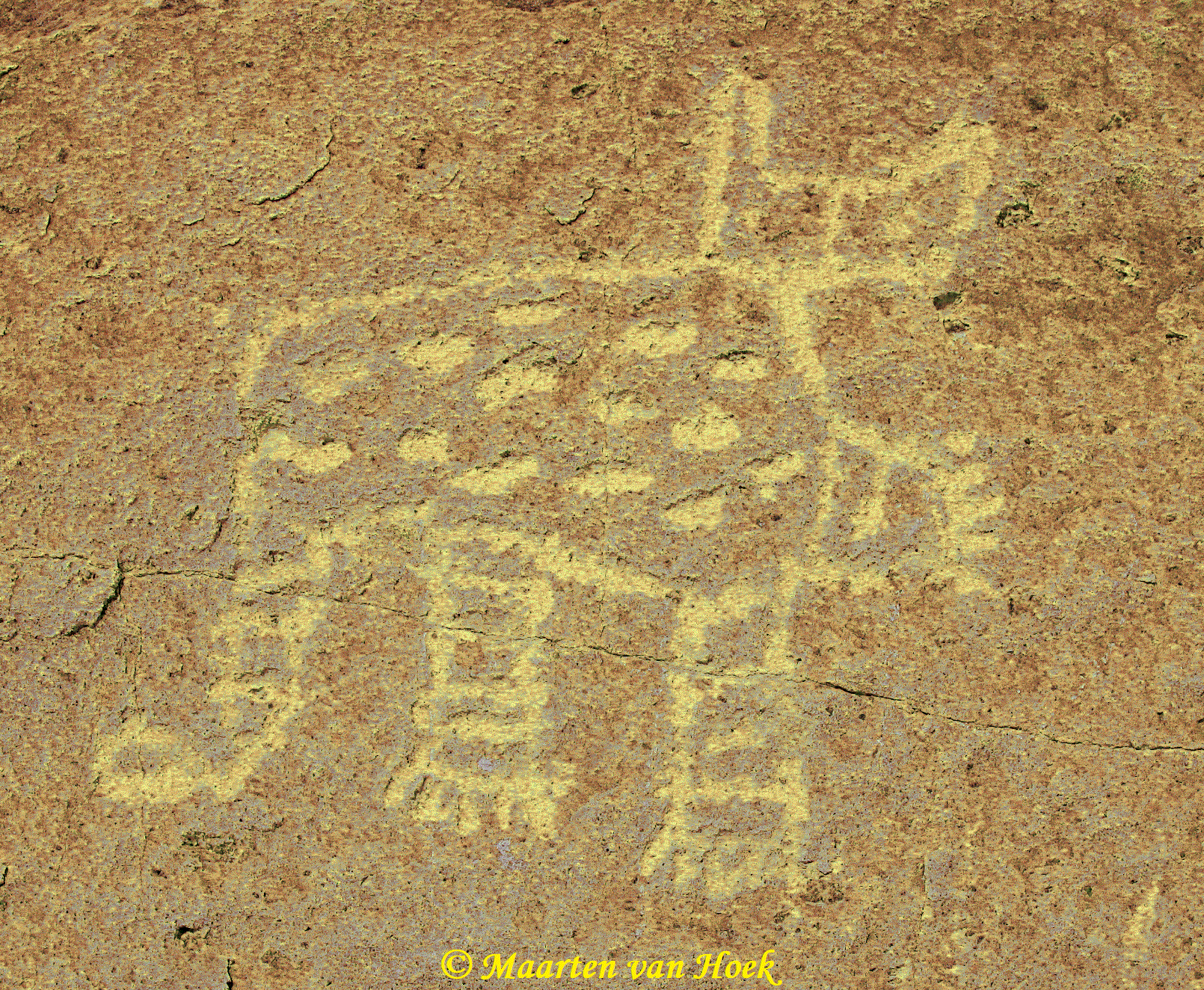
Figure 12. Petroglyph of a Majes feline on Boulder TM-Ba-031. Photograph © by Maarten van Hoek (much enhanced).
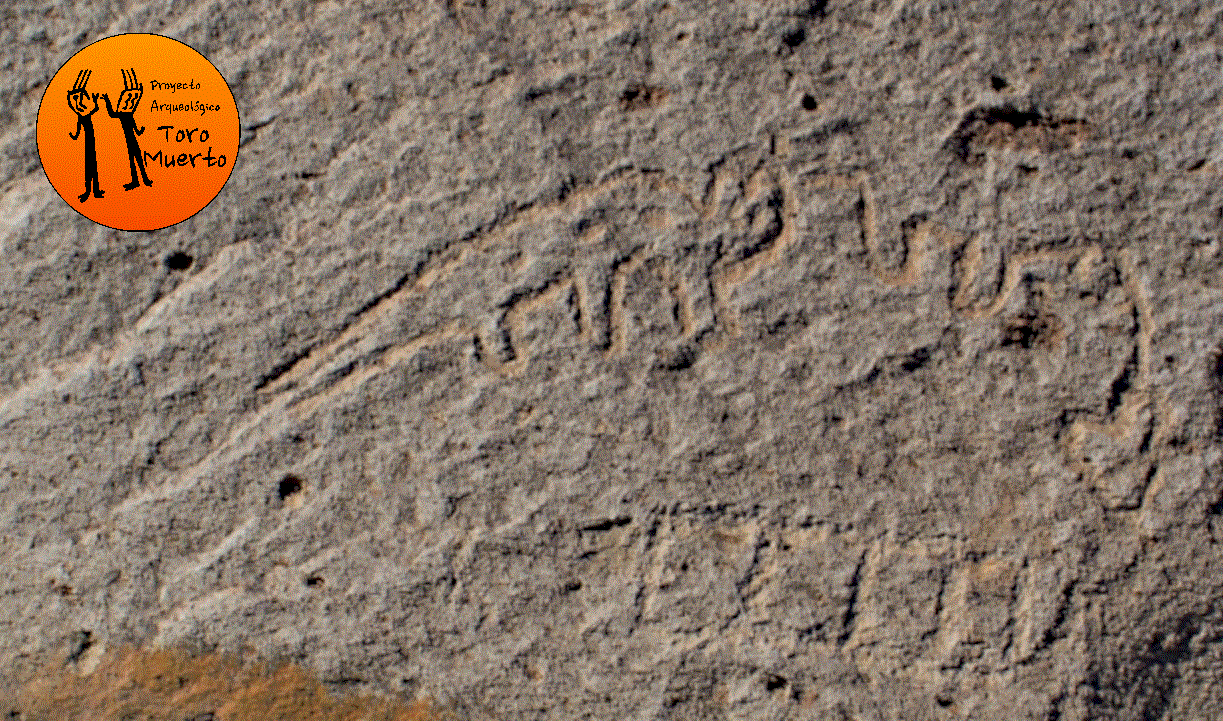
Figure 13. Petroglyph of a Majes feline with three legs on Boulder PTM-282. Photograph © by Karolina Juszczyk of the Proyecto Toro Muerto (enhanced).
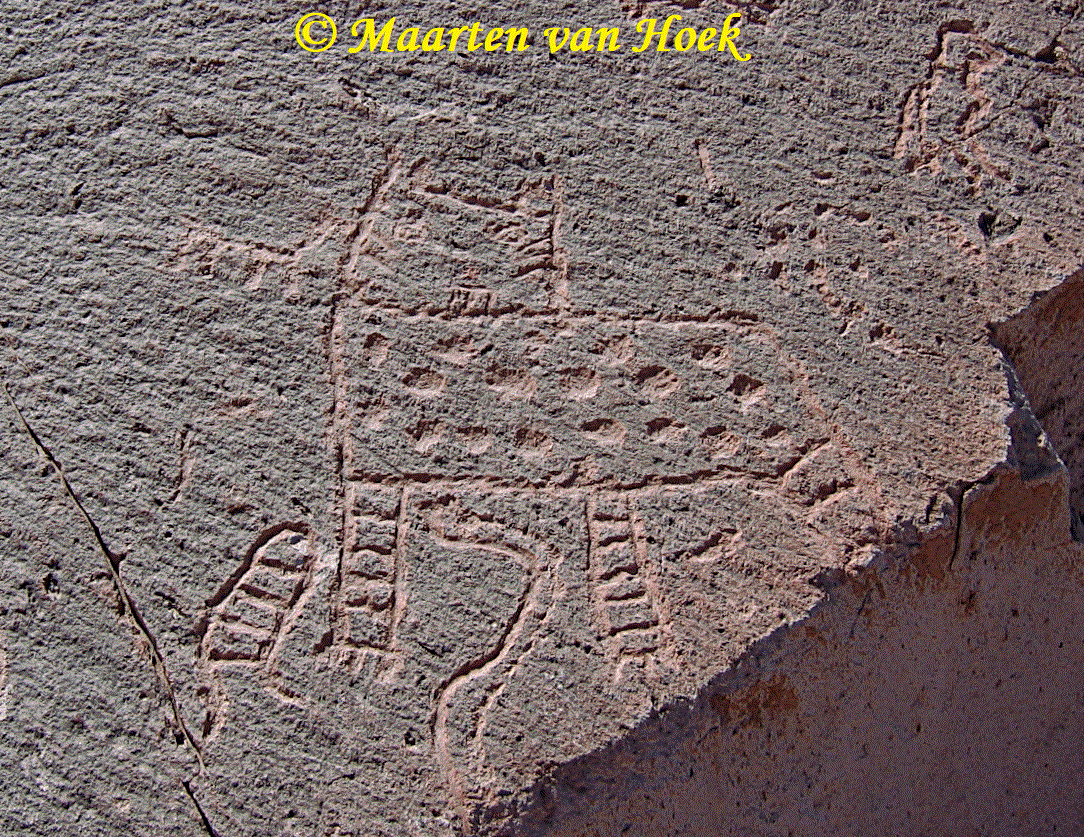
Figure 14. Petroglyph of a Majes feline on Boulder TM-Ac-002. Photograph © by Maarten van Hoek (enhanced).
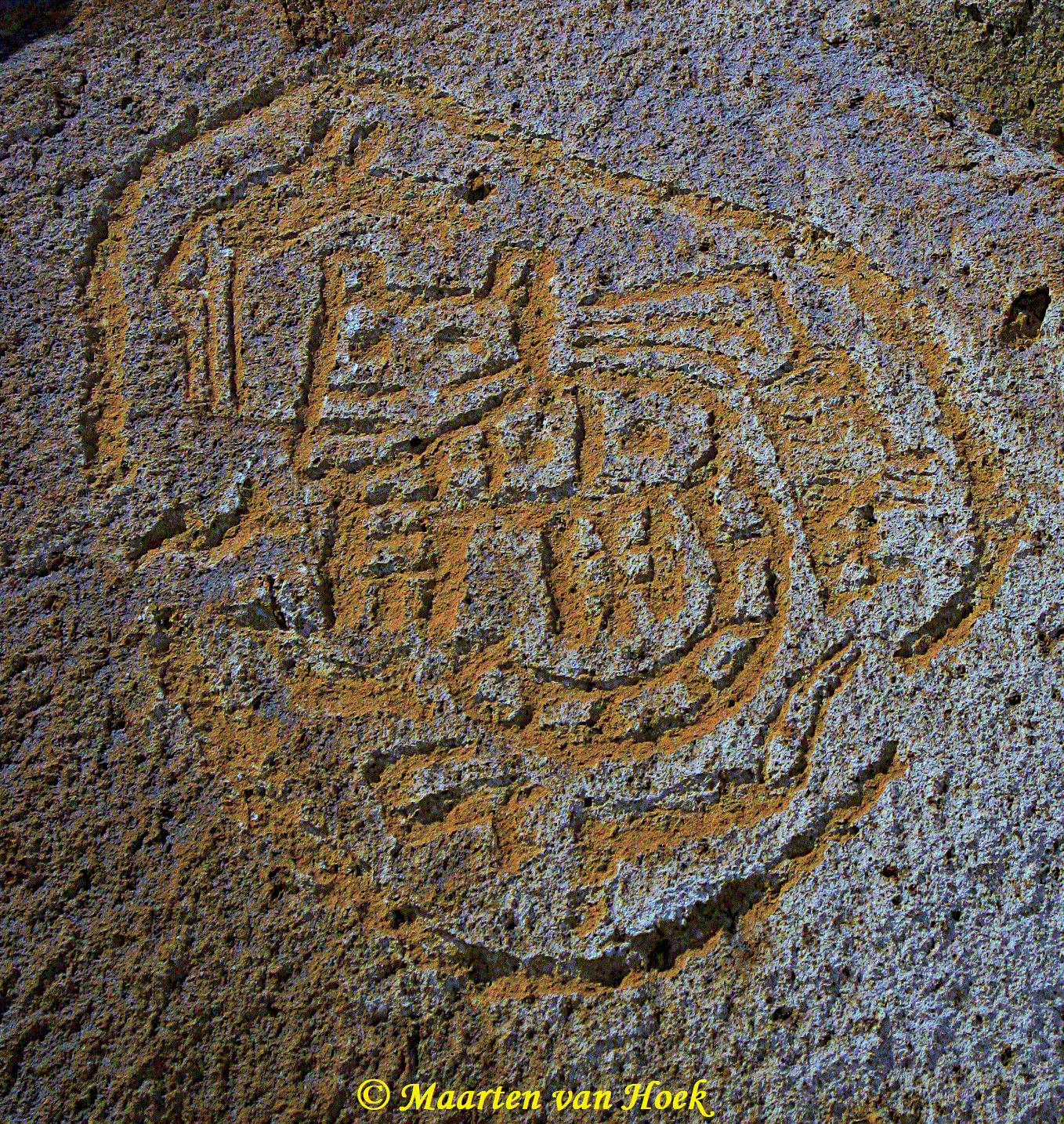
Figure 15. Petroglyph of a Majes feline on Boulder TM-Ba-002B. Photograph © by Maarten van Hoek (much enhanced).
Petroglyphs of felines with missing facial features may represent unfinished examples, like the feline on Boulder TM-Ex-003 (see Figure 34E), although felines with clearly aberrant facial features also occur, like the feline with possibly (!) four ears on Boulder TM-Be-018 (Figure 17) and the feline with possibly two mouths on Boulder TM-Bc-006 (Figure 34C). Although it is logical that fully laterally depicted felines only feature one eye, also felines depicted in “twisted” perspective occasionally also have only one eye, like the examples on Boulder TM-Bb-053 (Figure 18), on Boulder TM-Cb-001 (Figure 19A and inset A), on Boulder TM-Be-094 and on Boulder TMP-1476. At least one of the much weathered feline petroglyphs at Sendero de las Avispas near Camaná on the coast has one eye in its head that is depicted in “twisted” perspective (Van Hoek 2013: Fig. 43). A possible parallel is the geoglyph of a feline (?) on Cerro Lechuza (located about 450 km to the NW of Toro Muerto in Paracas Territory), the circular head of which seems to have only one eye (Figure 19C). However, this zoomorphic geoglyph is also said to represent a monkey (Garcia Soto 2013: 154, Fig. 5C).
The felines on Boulder TM-Be-018 (Figure 17) have no eyes, while (the back of) their head is randomly filled with dots. Is it possibly that these felines have been depicted intentionally in this way in order to suggest that they are looking through the rock surface; the veil between the mundane world and the spirit realm?
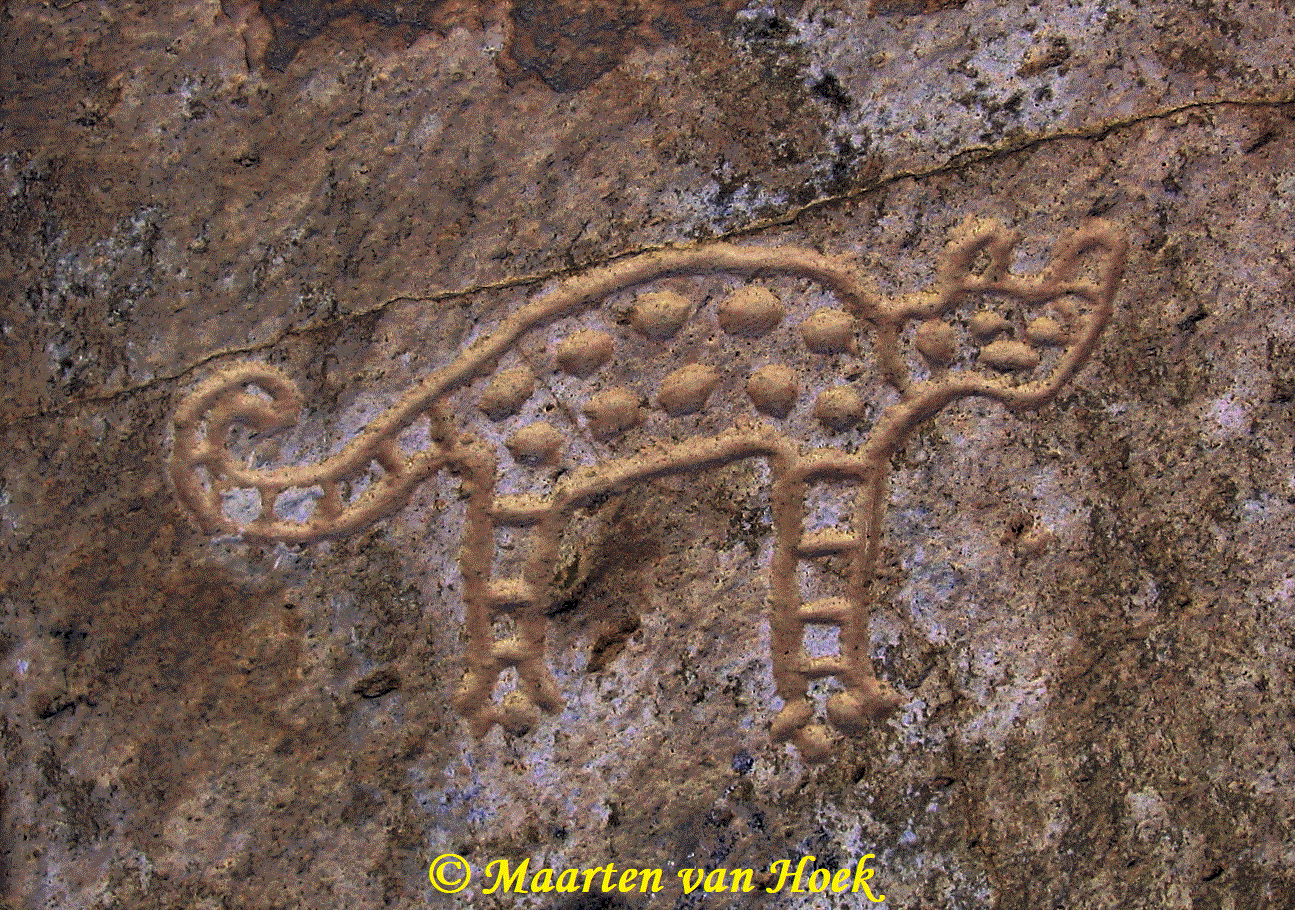
Figure 16. Petroglyph of a Majes feline on Panel TM-Bc-026. Photograph © by Maarten van Hoek (enhanced).
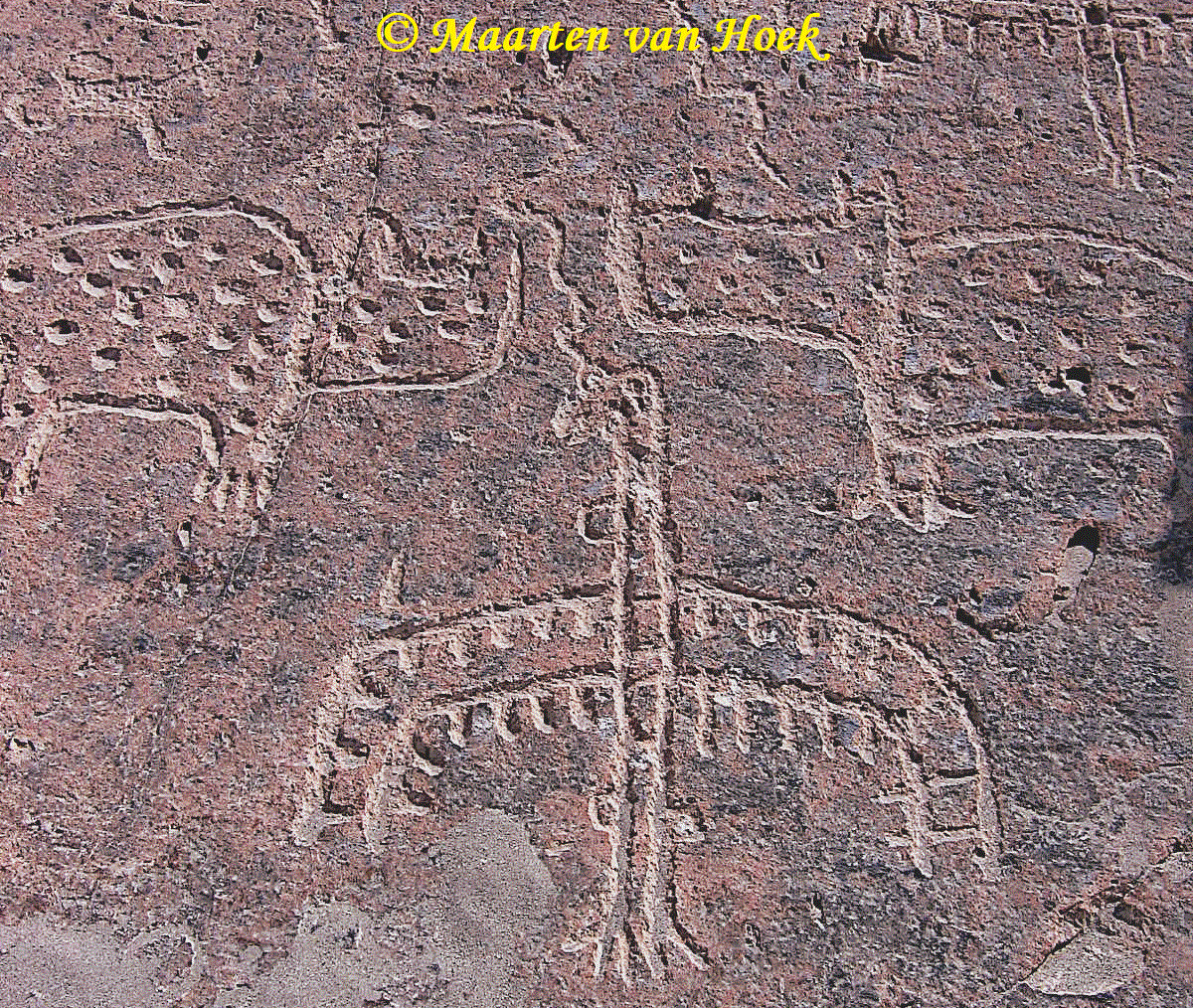
Figure 17. Petroglyphs of two Majes felines on Boulder TM-Be-018. Photograph © by Maarten van Hoek (enhanced).
Finally there are petroglyphs that might depict a conflation of a feline and another zoomorph and – in only one case at Toro Muerto – a possibly intentional “conflation” of a feline and a “trophy” head. On Boulder TM-Dx-031 is a bird that seems to have a (partial) feline body (Figure 20), while a comparable example (see Figure 19 – Element B) is found on much quarried Boulder TM-Cb-001, which also has the biggest number of feline petroglyphs on one panel (six, including the one-eyed example; see Figure 19; inset A). Also on Panel AP2-043D is a bird petroglyph that could represent a conflation with a feline.
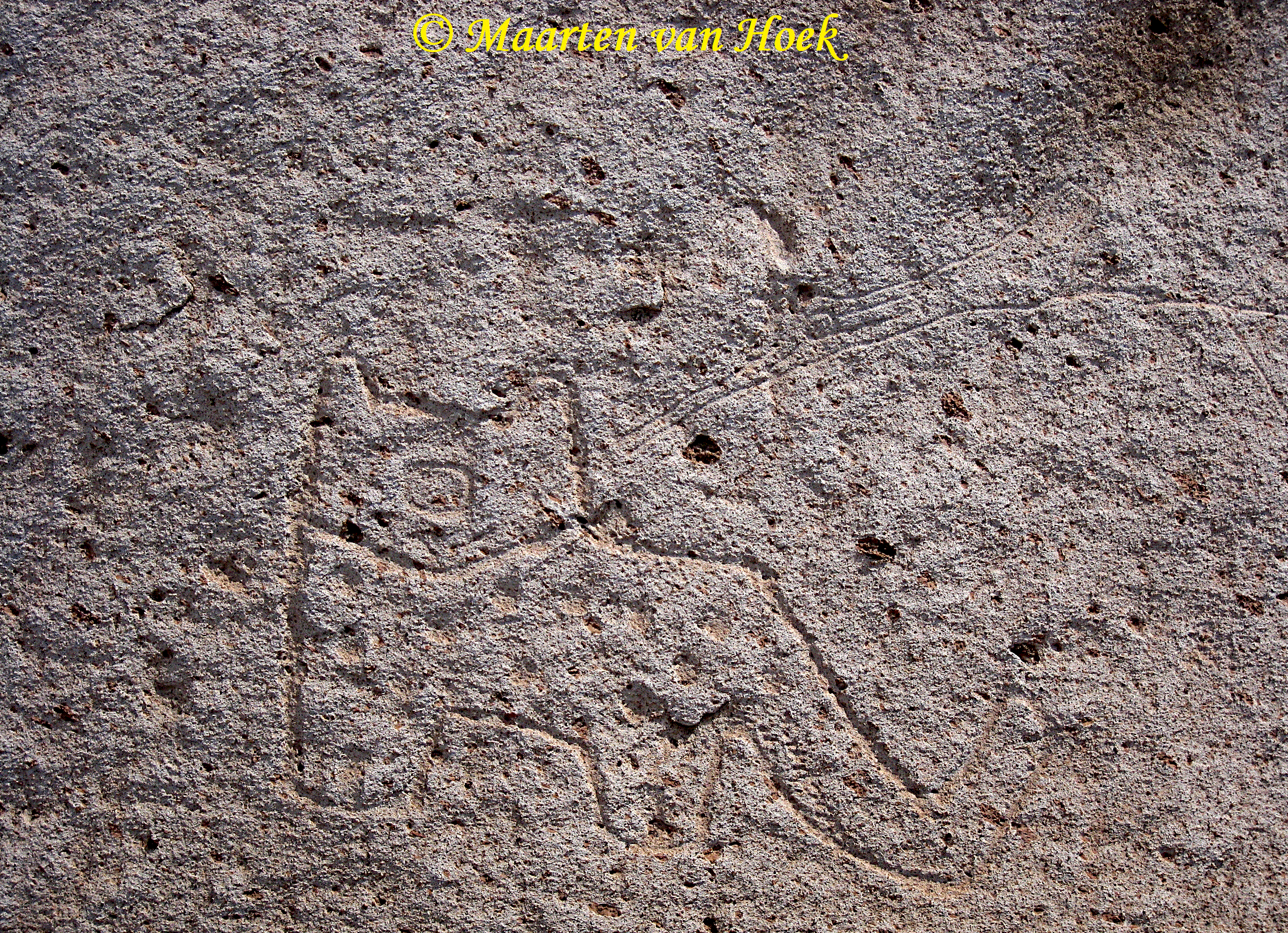
Figure 18. Petroglyph of a Majes feline on Boulder TM-Bb-053. Note the delicately incised bird petroglyph. Photograph © by Maarten van Hoek (enhanced).
On Boulder TM-Fa-001 is an interesting and possibly revealing petroglyph of a feline (Figure 21; framed). It has seven straight, parallel lines emerging from its chin, suggesting that the combination of its rectangular head – together with the seven lines – may have been an attempt to create a feline-human “trophy” head, or rather a “trophy-cat”. A high resolution photo of this panel, kindly supplied by Karolina Juszczyk of the Instituto de Estudios Ibéricos e Iberoamericanos, University of Warsaw, Poland (Juszczyk 2020: pers. comm.), shows that part of the head was ritually obliterated. This possible conflation, possibly first noted in 1951 by Eloy Linares Málaga (his slightly differing Petroglyph 9 on Panel B of his Boulder 26; Figure 21; inset B), may therefore also be evidence of a feline cult related to death rituals and – because of the later ritual obliteration – simultaneously expressing doubt about the effectiveness of their beliefs, thus perhaps indicating the end of the local feline cult.
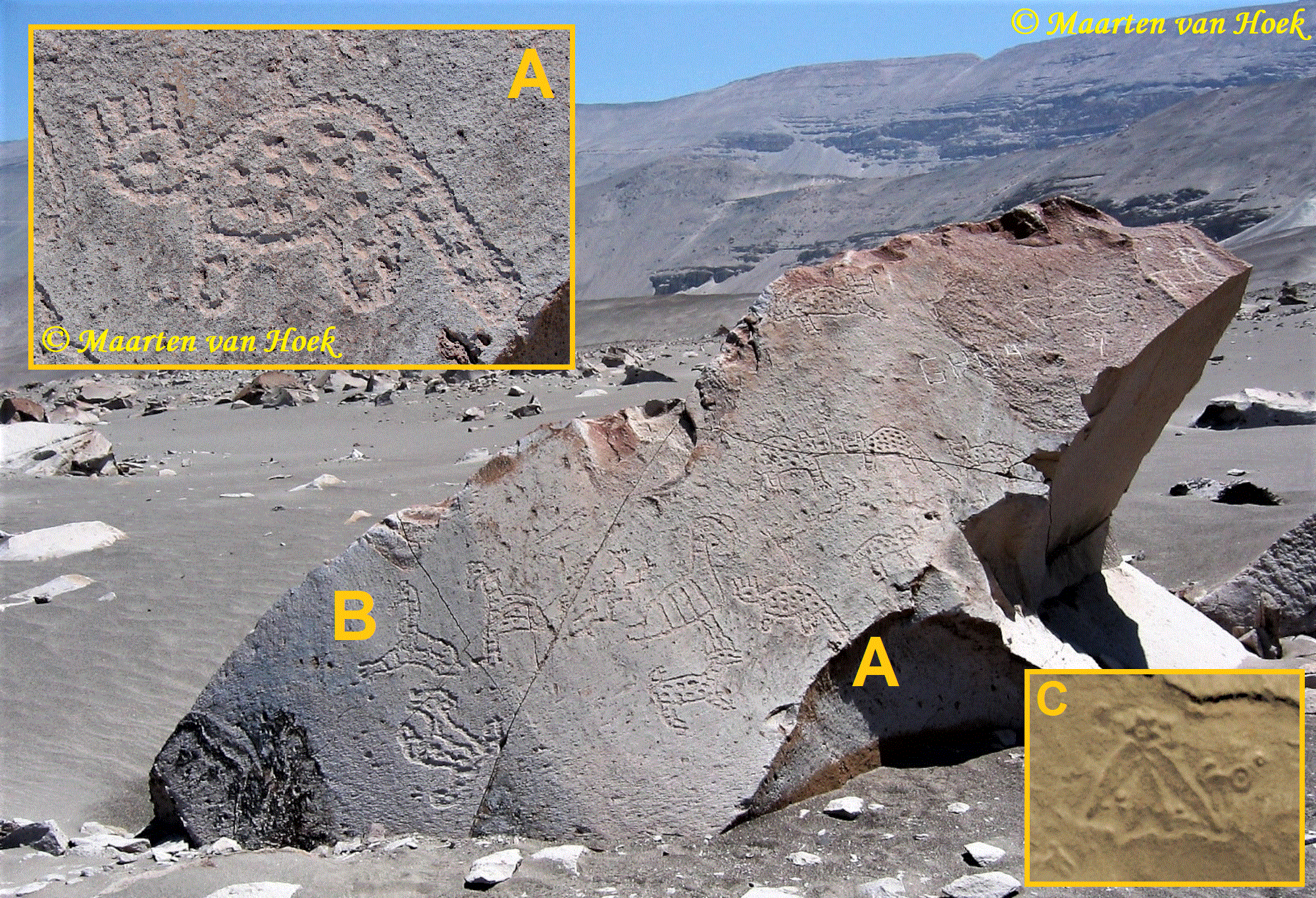
Figure 19. Petroglyphs of six Majes felines on Boulder TM-Cb-001. Photographs © by Maarten van Hoek (enhanced). Inset C: Geoglyphs of a bird and a feline (?) on Cerro Lechuza, Ica, southern Peru. Illustration based on Google Earth.
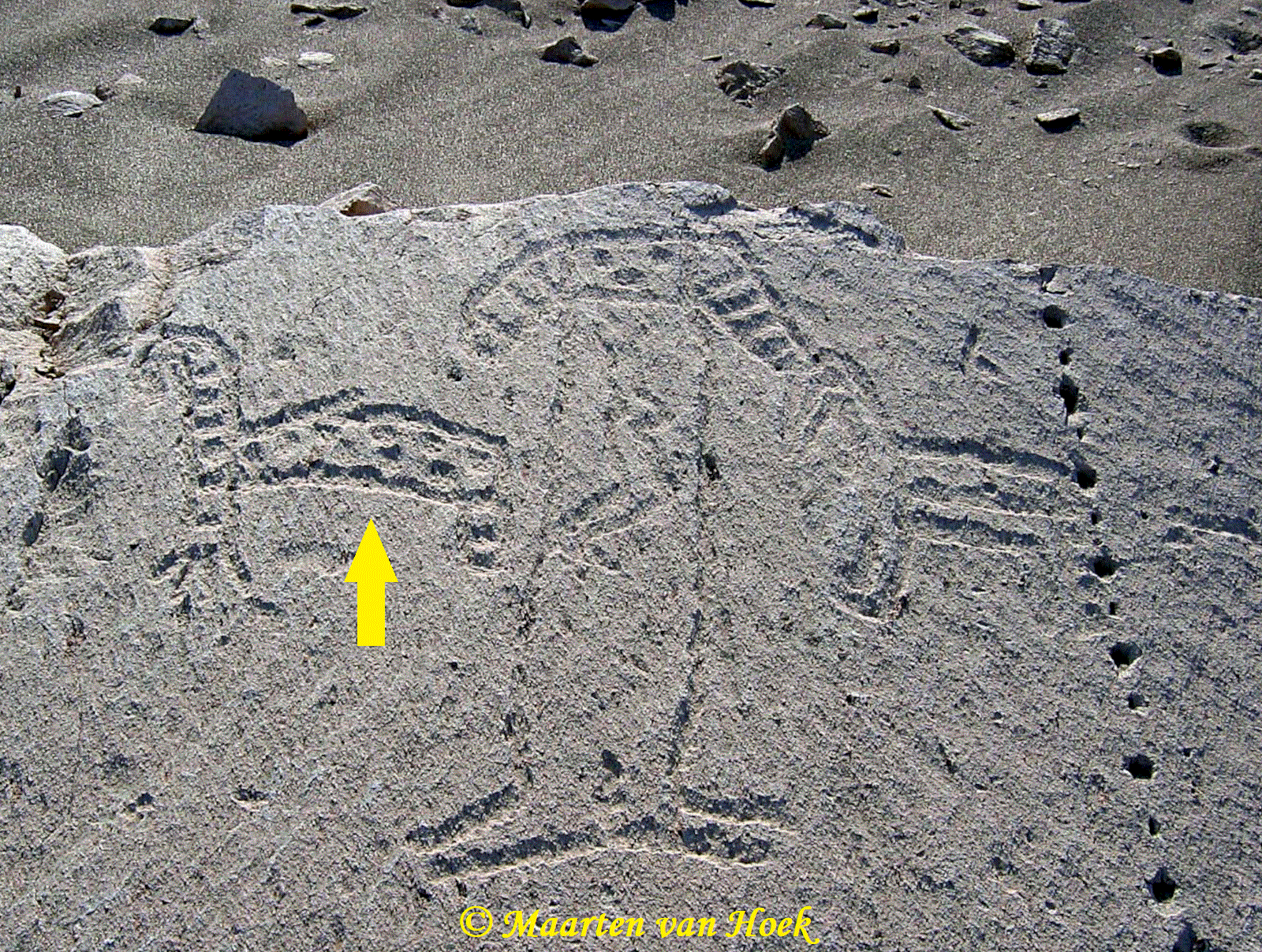
Figure 20. Petroglyph of a Majes bird-feline (?) on Boulder TM-Dx-031. Photograph © by Maarten van Hoek (enhanced).
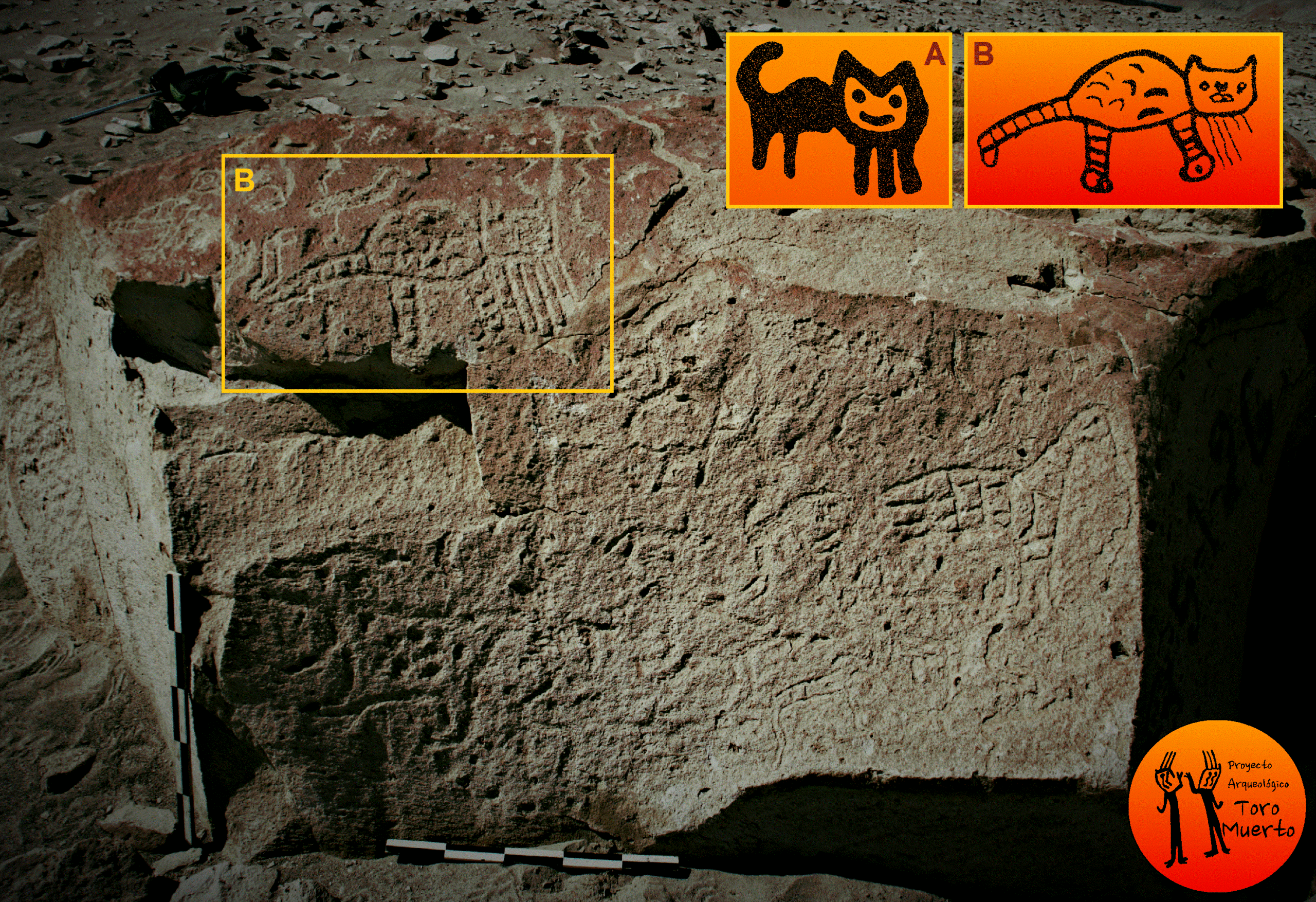
Figure 21. Petroglyph of a possible “trophy-cat” on Boulder TM-Fa-001 (framed). Photograph © by Karolina Juszczyk of the Proyecto Toro Muerto (2015). Inset A: Geoglyph of a feline at Cerro Pico. Drawing © by Maarten van Hoek, based on a drawing by Rubén García (2013: Fig. 9C). Inset B: Drawing, © by Maarten van Hoek, of the “trophy-cat” on TM-Fa-001 by Eloy Linares Málaga (1999: 138) showing minor deviations.
As far as I know the possible feline – “trophy” head conflation on Boulder TM-Fa-001 is unique for Toro Muerto. The only (possible!) parallel that I know of in rock art, is found on Boulder PAJ-012 at the rock art site of Illomas. At the bottom of this boulder is a sophisticatedly designed feline petroglyph that just possibly has a row of ten (?) short parallel lines from the chin-area (Figure 22). However, the photo that I have available only very faintly shows those possible parallel lines; hence the “?”. It may be telling however that on the same panel is a “trophy” head that is joined by a typical T-line to a small feline and a large snake, thus also linking cat imagery with death ritual. It must be mentioned here however, that a few petroglyphs of felines may also feature “hair” from the chin area, although the (very) short lines may also depict teeth (see for instance Figure 9).
Interestingly however, there is another parallel that is found in Paracas Territory at Cerro Pico, about 404 km to the NW of Boulder TM-Fa-001 at Toro Muerto (García Soto 2013). It concerns Geoglyph 1C of a complex of geoglyphs that also includes the figure of a “trophy” head carrier (Geoglyph 2B). Although I do not consider geoglyphs to represent a form of rock art, it is interesting to see that Geoglyph 1C depicts a feline with three parallel lines (hair, legs?) from the chin area (see Figure 21A). Those geoglyphs most likely are of Paracas origin, which may again link the Paracas-Nasca heartland with the Central Majes Valley (Van Hoek 2018a).
Importantly, there are several petroglyphs of zoomorphs at Toro Muerto that at first sight seem to represent camelids, although they have feet with up to five digits (while in real life camelids only have two) and sometimes a tail that is too long for a camelid, for instance on Boulder TM-Be-044 (where, moreover, one of those zoomorphs seems to carry a “trophy” head) and on Boulder TM-Cd-036. On the other hand, there are petroglyphs of definite camelids (and other quadrupeds) that are filled with feline-like dots and/or circles, which makes identification often (very) problematic. Therefore, identification of the species depicted on the rock panels will often be a matter of personal interpretation (see also Van Hoek 2023).
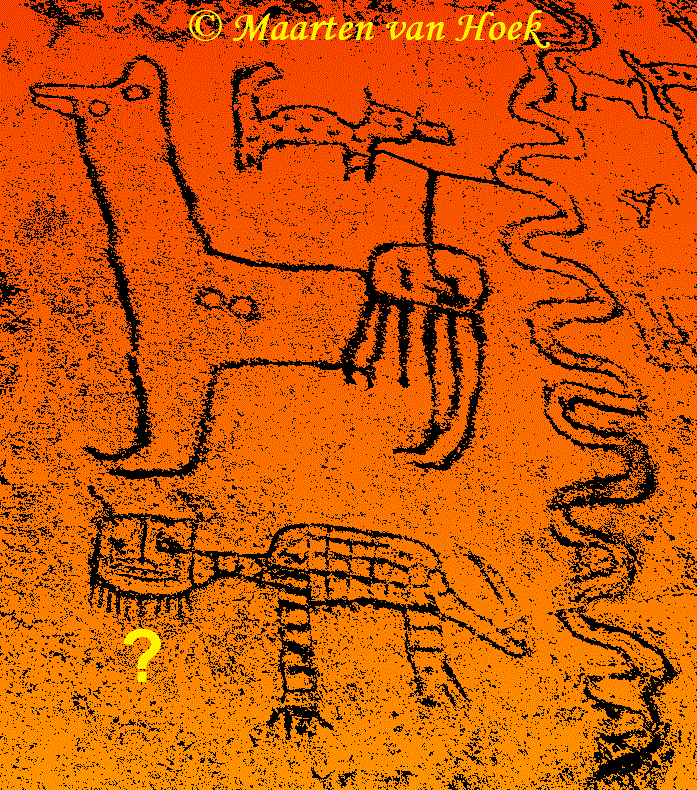
Figure 22. Petroglyphs of Majes felines on Boulder PAJ-012 at Illomas. Note the “trophy” head attached to a feline, a snake and a camelid. Drawing © by Maarten van Hoek, based on a photograph by Promarequipa in Facebook.
Finally, regarding feline petroglyphs it is interesting to see that the probably smallest feline petroglyph in Andean rock art is found in the Study Area, notably on Panel QPB-Ny-001 at the newly recorded rock art site of Quebrada Pampa Blanca (Van Hoek 2020), five kilometres north of Toro Muerto. The incised feline image is estimated by me to measures no more than 4 cm (Figure 1; Inset A), which contrasts strongly with the feline on Panel TM-Bf-048A (see Figure 1), which measures just over 60 cm, or the enormous feline petroglyph of over 375 cm at Quebrada del Felino in Jequetepeque in the north of Peru.
*
PART II
The Unexpected Distribution of the Majes Feline
There are about thirty rock art sites in the Majes Valley proper (the area from Camaná on the coast to Andamayo in the north; a stretch of about 110 km) and – although there still does not exist any complete inventory of all the images – it is remarkable to see that feline images are in fact concentrated and even statistically overrepresented in the Central Majes Valley. I prefer to call this area the Central Majes Valley because of its distance to the ocean (65 km south of Corire) and because of having the widest floodplain of the whole valley at this point (Figure 23). The Central Majes Valley thus encompasses the floodplain itself and the areas to the west (thus including the rock art sites of Punta Colorada, Toro Muerto and Quebrada Pampa Blanca) and east (Alto de Pitis) of the floodplain. Importantly, the archaeological excavation sites of Uraca are also located in the Central Majes Valley, the most relevant context of which will be discussed further on.
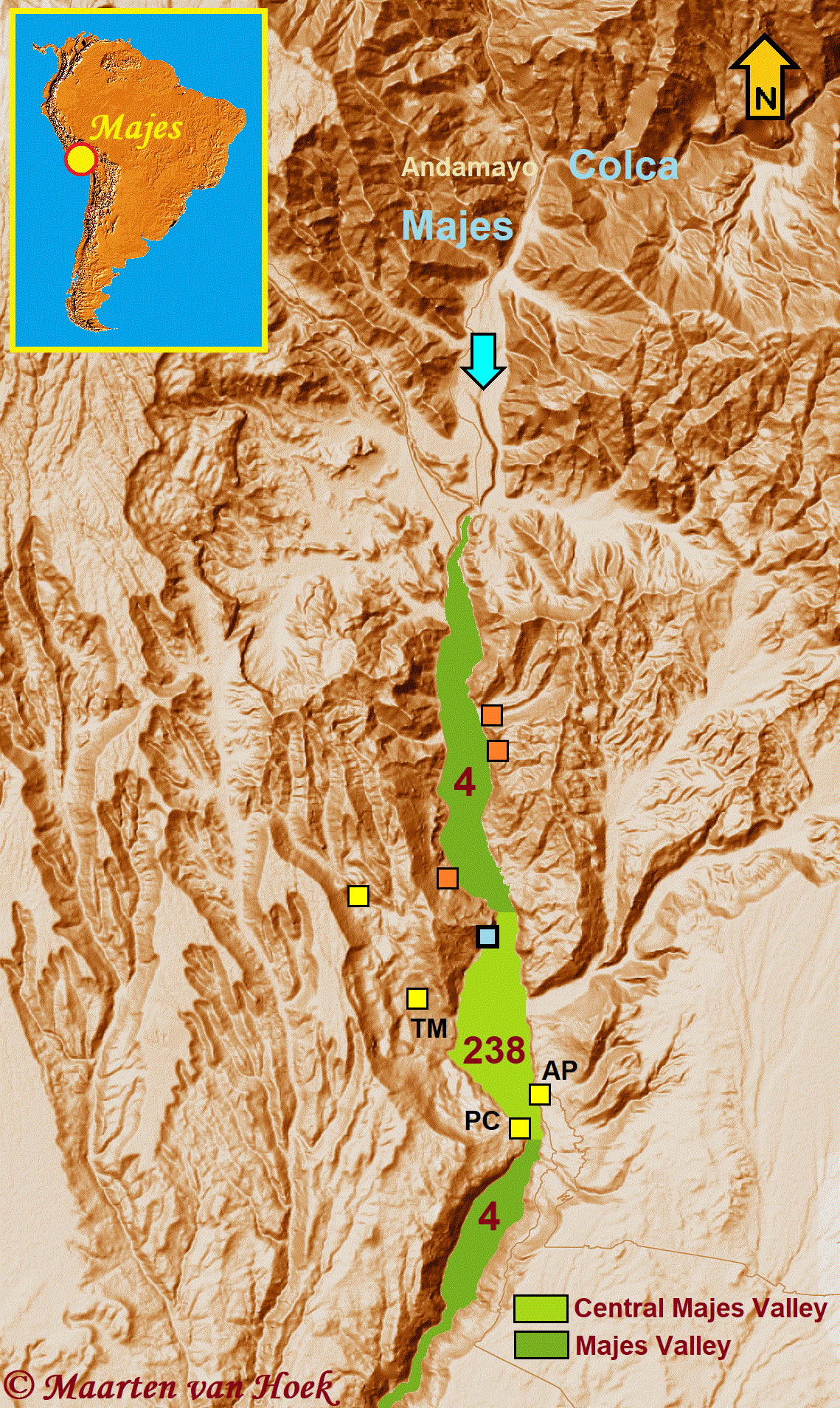
Figure 23. Map of the Study Area (situation 2021!). Yellow squares: the rock art sites of the Central Majes Valley; orange squares: some rock art sites in the remainder of the Majes Valley; blue square: the Uraca Excavation. Drawing © by Maarten van Hoek.
Just north of the Central Majes Valley are – among others – the rock art sites of Querullpa (on the west bank) and La Laja on the east bank, which have only one rock art image of a feline each. A boulder at Cementerio de Huancarqui (just north of La Laja) is now destroyed, but an old, faint photograph shows two possible feline petroglyphs (which are admitted in the count). Among the about 100+ zoomorphic petroglyphs at the extensive cliff site of La Laja I could detect only one small, fully laterally petroglyph of a feline, while at Querullpa again only one pictograph (unique for the area) of a feline has been recorded (Van Hoek 2012: Fig. 36). I am not aware of unambiguous feline representations in the rock art of the Upper Majes Valley further north of Huancarqui, while in the Lower Majes Valley I know of only four feline petroglyphs that have been recorded at the rock art site of Sendero de las Avispas, just north of the town of Camaná at the mouth of the Río Majes (locally called the Río Camaná, but regarding archaeological investigations the name of the river is completely irrelevant).
In the Majes drainage (thus including all its tributaries) just a few sites with only one or two feline petroglyphs have also been recorded, for instance at Viraco, NW of Andamayo, and at El Cubo, NE of La Laja. At Cerro Pano – not located in the Majes drainage, but located 16 km east of Camaná – I also recorded a few petroglyphs of felines (Van Hoek 2011b). The instances in this paragraph have not been included into my feline-count.
It is now striking to see that there indeed exists an enormous statistical contrast between feline representations in the rock art of the Central Majes Valley and the rest of the Majes Valley. At Alto de Pitis I counted a minimum of 105 petroglyphs of felines, while at Toro Muerto, Punta Colorada and Quebrada Pampa Blanca I know of no less than 133 examples (with a maximum of six feline petroglyphs on one panel, on Boulder TM-Cb-001; see Figure 19).
Not included in my feline-count are the many petroglyphs of (often spotted) quadrupeds that in some cases just possibly could perhaps have been intended to represent felines, nor several obliterated, exfoliated, quarried or damaged examples. It should also be mentioned here that this count does not include the feline petroglyphs on boulders at Alto de Pitis, Toro Muerto and Quebrada Pampa Blanca that I have not seen in the field. I inspected about 370 boulders at Alto de Pitis and about 2200 boulders at Toro Muerto, most with multiple panels. Photographs of several of the boulders that I missed in the field are, however, published in papers and books and on the internet (especially the extensive web site of the Proyecto Toro Muerto; PTM).
Therefore, the number of feline petroglyphs at Toro Muerto will probably be much higher, as up to 2017 the PTM said to have recorded felines on at least 118 boulders, while having covered up to then two-thirds of the whole of Toro Muerto. However, the PTM also included some (highly) doubtful examples. Moreover, the PTM also interpreted several zoomorphic petroglyphs as canines (or as some other species) that could represent felines after all, for instance their PTM-0051 (Van Hoek 2018a: Fig. 104), PTM-0054, PTM-0097 and PTM-0261 (Van Hoek 2018a: Fig. 105). Also Núñez Jiménez (1986) and Linares Málaga (1999) published illustrations of feline petroglyphs at Toro Muerto, some of which do not exist anymore due to displacement, robbery or destruction. Moreover, on several panels images are so densely crowded (and moreover often weathered and/or damaged) that it is uncertain to identify felines with certainty. As a result, the actual number of feline petroglyphs could well be (much) higher than the current grand total for the Central Majes Valley, which now stands at a minimum of 238+. It is obvious that this number indeed highly contrasts with the eight or so examples in the rest of the valley; an enormous statistical discrepancy that will be hard to explain, but there is one piece of archaeological evidence that may shed some light upon the plethora of feline imagery in the Central Majes Valley.
*
The Archaeological Context
In 2014-2015 the Proyecto Arqueológico Uraca (PAU), also known as the Lower Majes Valley Archaeological Project, excavated three sectors at Uraca, a site on the west bank of the valley, which is – confusingly – also said to be situated in the Middle Majes Valley (Birge and Scaffidi 2015). Therefore in this study, the archaeological dig of Uraca (blue square in Figure 23) and the rock art sites of Toro Muerto and Alto de Pitis, are all located in the Central Majes Valley.
At Unity 002 of Sector IIC (the northernmost section of the Uraca dig) the excavation team unearthed some telling remains that may possibly help to explain the excess of feline imagery in the Central Majes Valley. Those remains included four legs and attached paws of a feline (Scaffidi and Garcia Márquez 2014/2015: Fig. 125) and, more importantly, the partial skull and jaw of probably the same feline (Scaffidi and Garcia Márquez 2014/2015: Fig. 124; URL).
Interestingly, the skull of the feline was said to have received the same treatment as human “trophy” head skulls found at the same dig, although I could not detect a hole (for the carrying cord) in the upper part of the feline skull. Importantly, the eye-sockets had been stuffed with fragments of red textile cord, a fabric which is said by the excavators to be common in local Middle Horizon sites (around A.D. 600 to 1100) (Scaffidi and Garcia Márquez 2014/2015: 71). As far as I know these are the only “manipulated” feline remains unearthed so far in the Majes Valley (and anywhere else?). No mention of feline remains was made for – for instance – the finds in the archaeological digs at La Real (10 km north of Uraca) and Beringa (17 km north of Uraca) in the northern part of the valley. So far the Uraca cat interment seems to be unique.
There remain, however, several questions regarding the Uraca Cat remains. Were only the skull and jaw and legs interred, and if so, why? If a complete cat was interred, have the other remains of the cat been destroyed or robbed by looters? Is the cat skull (URL) indeed a “trophy” head fully comparable with human “trophy” heads? For several reasons I doubt that the skull served as a “Trophy” Head, like human skulls do. First of all, as far as I know this is a unique example, while “trophy” heads are found at numerous sites in southern Peru, often in great quantities, like the cache of 48 Nasca-Style “trophy” heads at Cerro Carapo in the Palpa Valley further to the NW. Moreover, the feline skull has no hole to receive the carrying cord like human “trophy” heads do. Possibly for that reason Scaffidi (2015) argued that the human and feline “Trophy” Heads once were fixed to headdresses or used as masks in dances and presentations depicted in the rock art at Toro Muerto. Personally I prefer the option of the human “trophy” heads (and possibly the feline legs) to have been attached to some garment (for instance around the belt; a much more convenient place), while just possibly the smaller feline skull-fragment could have been attached to a headdress, but all my suggestions remain pure speculation.
However, I seriously question if there is any connection between the Uraca skulls and rock art scenes at Toro Muerto representing dances and performances. In my opinion there is not a single shred of evidence of a connection between the “trophy” heads found at Uraca and petroglyphs depicting scenes of dances and performances at Toro Muerto. Although there are scenes of possible dances and performances at Toro Muerto, as far as I know, none of the purported dances and performances is associated with a “trophy” head and, more importantly, none of the characteristic Majes “Dancers” has been depicted carrying a “trophy” head (Van Hoek 2022).
*
Is there an Uraca – Toro Muerto Connection?
Having seen most of the rock art imagery at Toro Muerto, I find Scaffidi’s tentative conclusion about purported parallels in Toro Muerto imagery rather premature and unsubstantiated. It seems that in several ways it is attempted by her to make connections between the Uraca site and its finds and (the images at) the rock art site of Toro Muerto that actually do not exist. First of all, it is argued that from Sector-1 at Uraca, the Toro Muerto and Pitis petroglyph sites (across the river) are visible (Scaffidi and Garcia Márquez 2014/2015: 65). However, from Uraca Sector-I only the site of Alto de Pitis (6 km to the SE) is visible, but Toro Muerto is definitely not. At the most only the cliffs at the very extreme SE end of the boulder field may be seen 2.5 km south of Sector-1, but not the site itself, which is completely blocked by the southern end of Cerro Zuñimarca. It thus seems as if a connection is desperately sought for. If visibility of the Sacred Site of Toro Muerto would have been that important to the ancient Majes, then they would have selected another location.
The same authors moreover link the Uraca feline remains with (only) one specific petroglyph at Toro Muerto (Figure 24; found on Boulder TM-Cc-005, though not illustrated by them) by stating that the Uraca feline skull is an interesting discovery, especially in view of one of Toro Muerto’s petroglyphs depicting a cat with a “Trophy” Head in its mouth. They argue that it is likely that the cat is associated with the motifs and themes of the male hunters seen in the iconography of the Andes (Scaffidi and Garcia Márquez 2014/2015: 77). I feel that I have to make some observations also regarding this statement.
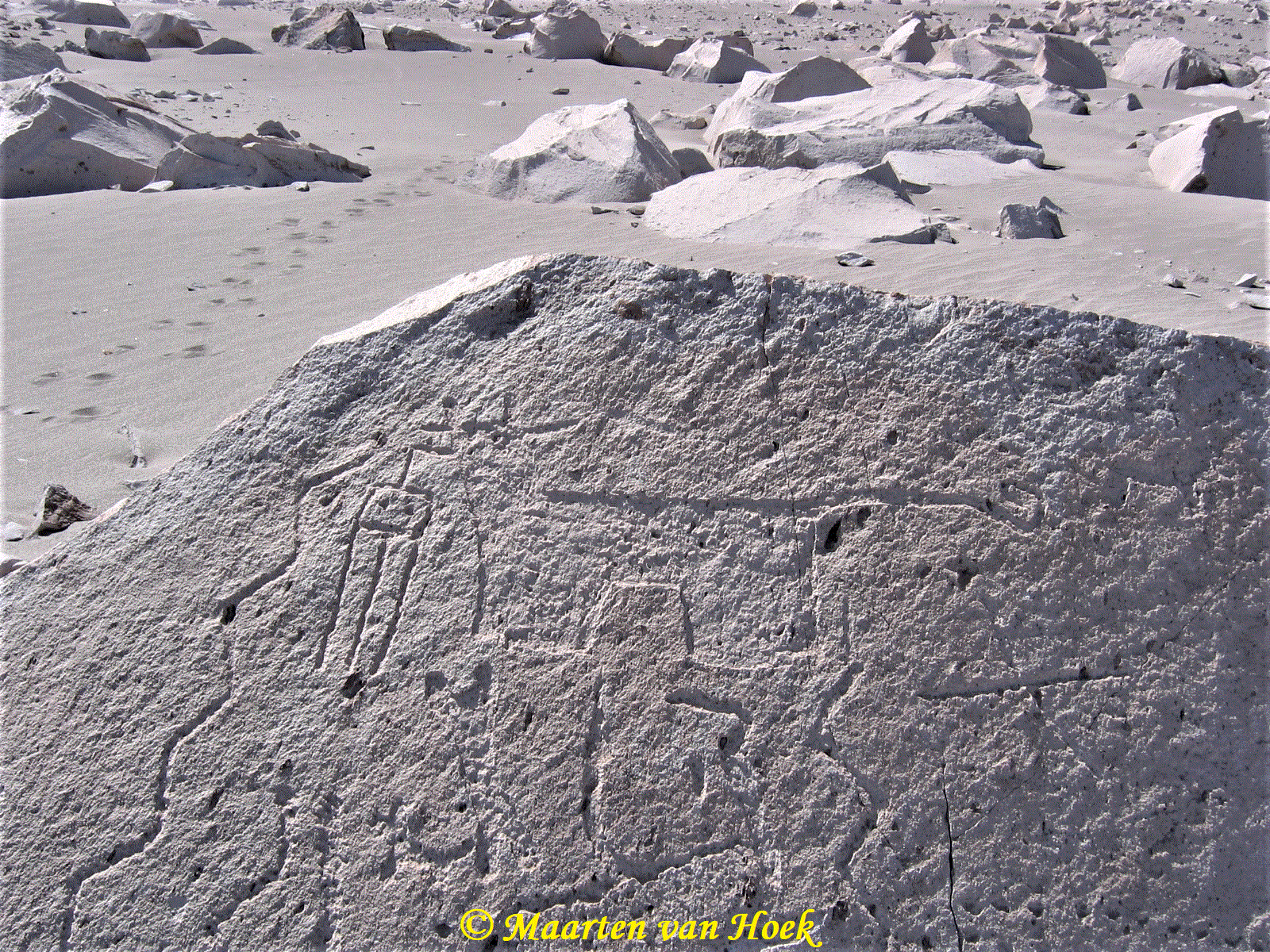
Figure 24. Petroglyph of a quadruped with a “trophy” head on Boulder TM-Cc-005. Photograph © by Maarten van Hoek.
First of all, I doubt whether the petroglyph of the “cat” with a “Trophy” Head in its mouth (Figure 24) unquestionably depicts a feline (see Van Hoek 2023 for more pictorial arguments). To begin with, the quadruped on Boulder TM-Cc-005 is fully pecked and shows no signs of an earlier outlined, ritually obliterated feline image. Secondly, the image is, except for the tail-end, strikingly rectilinearly executed, thus not matching the numerous, mainly curvilinear feline petroglyphs in the Central Majes Valley. Importantly, there seem to be indications that rectilinearity in Majes rock art imagery comprises a later layer of rock art production that might have developed under the influence of the Wari rectilinear style (Van Hoek 2018a).
Thirdly, the quadruped has two massive legs (without the digits that are typical for Majes feline images) that do not look like feline legs at all. Finally, the head has five short, linear appendages; two parallel and horizontally arranged ones suggestive of a mouth (from which the carrying cord and the “trophy” head are dangling). It does not look like a feline head at all. The two horizontally depicted grooves may represent ears, but again they do not look like feline ears. Moreover, at Toro Muerto I have seen many camelid petroglyphs with similar heads, with spots and even with tails that are too long for a camelid. Some of those camelid petroglyphs however, have more than two digits, in some cases even up to five.
On Boulder AP4-017 at Alto de Pitis the petroglyph of a quadruped has a “trophy” head dangling from its mouth (Van Hoek 2010: Fig. 29). However, it has cloven camelid hooves and yet a long feline-like tail hovering over the back. Is it possible that some zoomorphic images actually represent conflations of two species (see also Figures 19B and 20)? Is it also possible that “trophy” heads were added to existing quadruped figures at a later stage? Keep in mind as well that in Majes Style Rock Art different animal species carry “trophy” heads (birds, camelids, felines, humans, dogs and unidentified zoomorphs). Finally, I know of at least one instance where a “trophy” head was later changed into a bird petroglyph (Van Hoek 2018b). Therefore, do not accept the elements of a scene or even the components of a complete image of a biomorph to have always been manufactured by the same hand at the same time.
In fact, true feline petroglyphs intimately associated (e. g. connected) with “trophy” heads are extremely rare in Arequipa rock art. As far as I know only one unambiguous example has been recorded at the rock art site of Illomas in the Manga drainage, about 34 km NW of Toro Muerto (Jennings and Van Hoek et al. 2019: Fig. 27). At Toro Muerto there is only one (possible!) feline petroglyph that is associated with a “trophy” head. This most interesting and informative scene is found on Panel TM-Bd-007D and involves a large, partially outlined Rectilinear Bird and a fully pecked quadruped (a feline?) that are facing each other, while a “trophy” head is placed in between the two animals, but not touched by them. They both have open, menacing mouths, as if they are disputing the “trophy” head (Van Hoek 2010: Fig. 32).
There is only one other petroglyph of a feline at Toro Muerto (on Boulder TM-Fa-001) that in my opinion may symbolise a “trophy” head. It is a feline with its head in the “twisted” perspective position, while five parallel lines emerge from the chin-line (see Figure 21B). Also the rather distorted feline petroglyph on Panel AP3-113A just possibly may have (had) similar parallel lines from the chin area, especially as in that small area there normally is nothing to obliterate (Figure 25). The arrangement of the hair of a “trophy” head in parallel lines running downwards from the chin area is a characteristic feature of “trophy” head petroglyphs in Arequipa rock art.
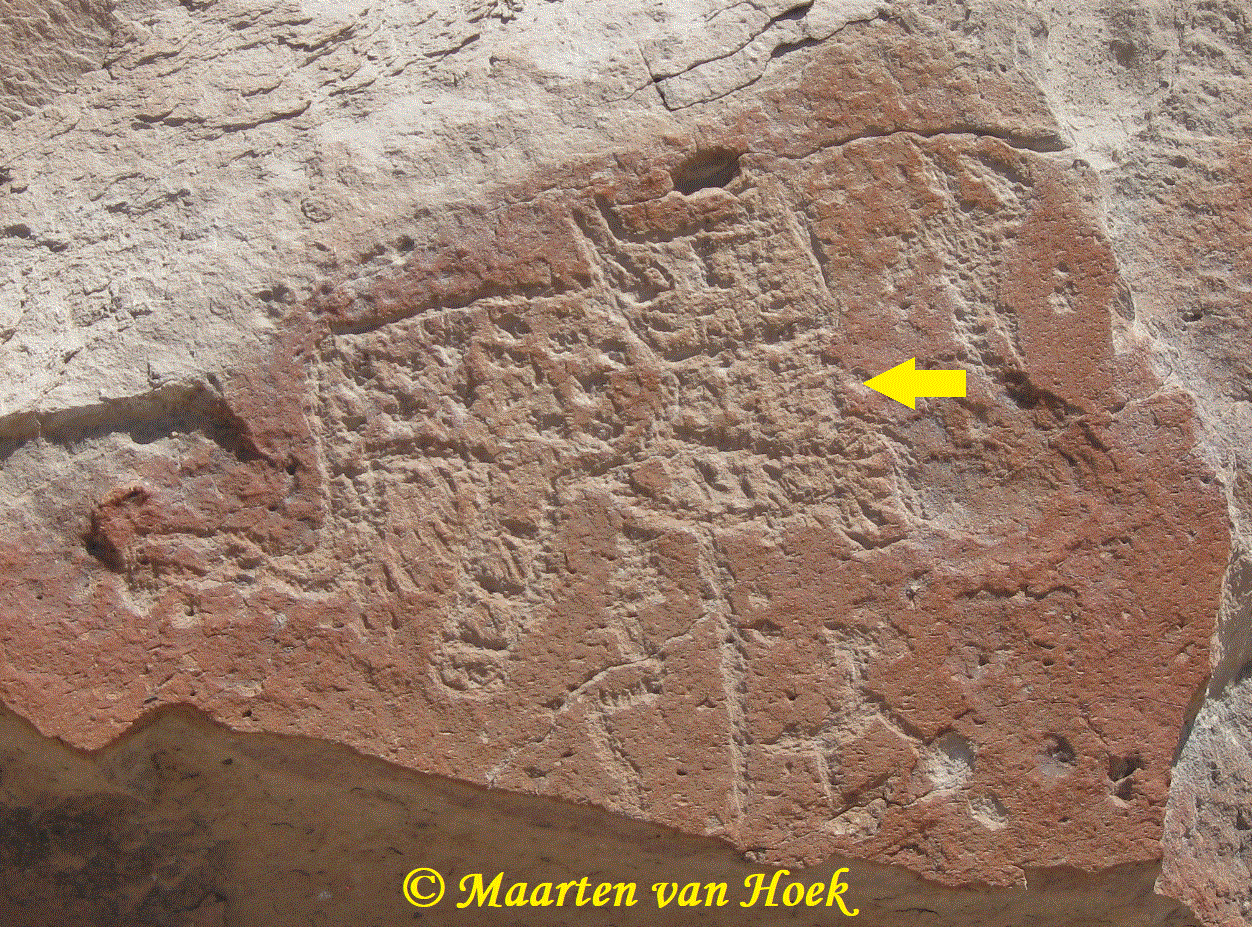
Figure 25. Petroglyph of a possible Majes “trophy-cat” on Panel AP3-113A. Photograph © by Maarten van Hoek.
Although I cannot contest their – in my opinion vague and unsubstantiated – remark that it is likely that the cat is associated with the motifs and themes of the male hunters seen in the iconography of the Andes (Scaffidi and Garcia Márquez 2014/2015: 77), it must be mentioned that not at Toro Muerto, nor at Alto de Pitis or any other rock art site in the Majes area have I ever seen an unambiguous hunting scene. The only two possible (!) hunting “scenes” (not even involving felines!) that I know of are found on Boulder QSC-Sector-3 / Pe-006 along the River Caravelí (Van Hoek 2019: Fig 39) and – even much more doubtful – on Boulder AP3-186 at Alto de Pitis (Van Hoek 2019: Fig. 38). Finally, I cannot even remember to have ever seen a feline petroglyph in the Central Majes Valley that is intimately engaged in a scene unequivocally involving an active anthropomorphic figure.
Additionally, the same authors remark that the 11 “Trophy” Heads found at Uraca, along with a stuffed feline skull, suggest that Toro Muerto played an important role in performing rituals related to death and war, and that it may have been considered a sacred place where the spirits mediated the gap between the living and the ancestors (Scaffidi and Garcia Márquez 2014/2015: 62). Although I fully agree with most of this observation, I nevertheless seriously challenge their “war” statement. Again, I agree that the “Trophy” Heads relate to death, but not necessarily to “war”. In fact I do not know of any war-related rock art scene in the whole of Arequipa, although hunting scenes and (possible) war (or ritual fights called “tinku”) scenes in rock art have been recorded much further to the southwest of Majes, for instance at Locumba and Miculla in Peru and – in Chile – at Rosario and Ausipar. Even the petroglyphs of the two unambiguous warriors at Chillihuay are not involved in a (war) scene. However, what may express – or rather symbolise – conflict and trauma in the Majes Valley are the numerous (possible!) scenes of confrontations (as far as I know only between zoomorphs!), especially at Toro Muerto.
Based on the excavation results at the Uraca dig it is also claimed that discovering the cat and human “Trophy” Heads together at Uraca provides concrete proof that cats (plural!) were actually used in death rituals, and were not simply symbolic depictions in artwork (Scaffidi 2015). I also challenge this observation, as it is based on only one – so far unique – find of a feline skull in the whole of the Majes Valley, which is not in agreement with the plethora of feline petroglyphs in the Central Majes Valley. Moreover, they also suggested that the discovery of those cat remains, along with the petroglyph of a cat with a “Trophy” Head at Toro Muerto, strengthens the theory that injured males in Uraca were involved in this ritual practice, either as victims, shamans, or captors (Scaffidi and Garcia Márquez 2014/2015: 85). Again, I emphasise that only one feline skull has so far been dug up in Majes. Moreover, I also doubt very much whether the petroglyph they refer to (see Figure 24) is in fact a feline (Van Hoek 2023). Therefore, the evidence to base such general theories upon, is too insubstantial.
They moreover remarked that they also excavated evidence of headdresses, musical instruments, and camelid rituals that are depicted in detail in the petroglyphs (Scaffidi and Garcia Márquez 2014/2015: 83). Although I am not aware of any camelid ritual in Majes rock art (only of camelid-on-leash scenes), musical instruments may have been depicted in Toro Muerto rock art. Although Scaffidi and Garcia Márquez give the impression to refer to frequently occurring rock art images or scenes at Toro Muerto, in fact possible “musical instruments” are only found in three extremely rare petroglyphs, reported (for the first time by me in 2009) on Boulders TM-Bb-009 and TM-Bb-010. Three anthropomorphic figures on those boulders seem to play a wind instrument, two of which (on Panel TM-Bb-009B) simultaneously carry a “trophy” head and a headdress (Van Hoek 2010: Fig. 3). These three figures could represent the shamans or priests who performed ceremonies at Toro Muerto, although Scaffidi and Garcia Márquez (2014/2015: 83) do not specifically refer to these three unique images (which would have been feasible). It may be important that the upper panel of one boulder (Panel TM-Bb-009A) has a feline petroglyph next to an isolated “trophy” head (see Figure 7).
*
DISCUSSION
This study demonstrated that feline imagery constitutes an unexpected overabundance only in a limited area of the Majes Valley. This seems to indicate that possibly – during an unknown period of time – a kind of feline cult developed and boomed in only the Central Majes Valley. Most of the feline petroglyphs in this area seem randomly arranged on the rock’s surface, although in some instances they seem to form a group (see for instance Figure 6). Only in one case there seems to exist an unambiguous relationship with another petroglyph. It concerns the feline that is physically linked by a line to the large and intricate image of a mummy bundle, yet to be discussed. The other possible death-related image of a feline is the petroglyph in which a series of parallel lines emerges from the chin area, which is suggestive of a “trophy” head (see Figure 21). It is therefore possible that indeed the purported feline cult in the Central Majes Valley was death-related.
This idea seems to be confirmed by the so far unique find of the feline skull and legs at Uraca. However, one find is – in my opinion – not sufficient proof of a specific feline cult in the Central Majes Valley. The feline remains may not even have been associated with the human “trophy” heads found at the same spot at Uraca. It more likely is a (unique?) grave good for possibly a high status person, who has worn the feline skull as decoration or as an amulet. Moreover, in my opinion also the human “trophy” heads are possibly more associated with the interred high status person than with the feline remains. In short, the suggested link between the Uraca feline remains and the Uraca human “trophy” heads is premature, as well as the association of the Uraca feline remains with only one rock art image at Toro Muerto, which, moreover, is doubtful as a feline (see Figure 24).
On the other hand, the enormous amount of 238+ feline petroglyphs (situation 2021!) may well be evidence of a specific feline cult in this particular part of the valley. But even when taking into account the possibly unique Uraca feline remains, it still remains a mystery why in rock art the feline imagery is almost entirely confined to the Central Majes Valley. I can only suggest – very tentatively – that this area was once influenced by Formative Period Paracas traders who introduced the practice of taking “trophy” heads, as well as elements of their feline cult. Consequently this contact may have triggered a comparable feline cult among the Majes people, which was originally based on the Paracas iconography and worldview, transferred for instance via textiles. However, it is no revelation that in Majes rock art we do not find the typical Paracas feline imagery as seen on their textiles. Also in the Paracas heartland there is a distinct gap between textile imagery and rock art depictions; the intricate felines and other beings of their textiles do not occur in their rock art either.
It is possible that the Majes people manufactured images of the feline species they knew from their own environment, the Andean Mountain Cat and/or Pampas Cat, even though sightings of and encounters with those cats may – even in prehistoric times – have been rather infrequent in the Central Majes Valley.
I mentioned earlier that the Andean Mountain Cat (and perhaps the Pampas Cat as well) is traditionally considered a sacred animal by indigenous Quechua speaking peoples. This concept may even be very old and may indeed have been introduced to Majes by Paracas traders. Moreover, there are some graphical indications that the feline images in the Central Majes Valley belong to an early layer of rock art production, some possibly even dating to the Formative Period.
The first indication of great age is that there are a few petroglyphs of felines (and of zoomorphs with feline heads) that are probably very old, like the unique fully laterally depicted feline on Boulder QPB-Nz-001 at Quebrada Pampa Blanca (Van Hoek 2020: Fig. 6; golden arrow in Figure 5), which has a mouth with a fang (which is – so far – unique in Majes feline imagery), while the rest of the profile head is also reminiscent of feline imagery of the Formative Period MSC-Style (Van Hoek 2011a). Also the “snake” (or an isolated tail?) with a similar profile feline head (teeth, but no fangs shown, though) on Boulder AP3-114 may date from the Formative Period (Van Hoek 2011a; 2018). The second clue concerns the feline petroglyphs on Panels AP3-069B and AP3-091A that are probably Paracas-related because of the very specific U-shaped frame that encloses the head (both shown in “twisted” perspective) (Van Hoek 2013: 83; Figs 76 and 77). A third indication is the fact that at least two feline petroglyphs – on Panels AP1-001A and TM-Cd-025A (Figure 26) – have intentionally been superimposed by broad stripes or zigzags (Van Hoek 2013: Figs 154 and 156), which are thought of by me to represent a rather late layer of rock art production. Interestingly, impressive (combinations of) large zigzags and stripes (and of discs) are also unique for the rock art of the Central Majes Valley.
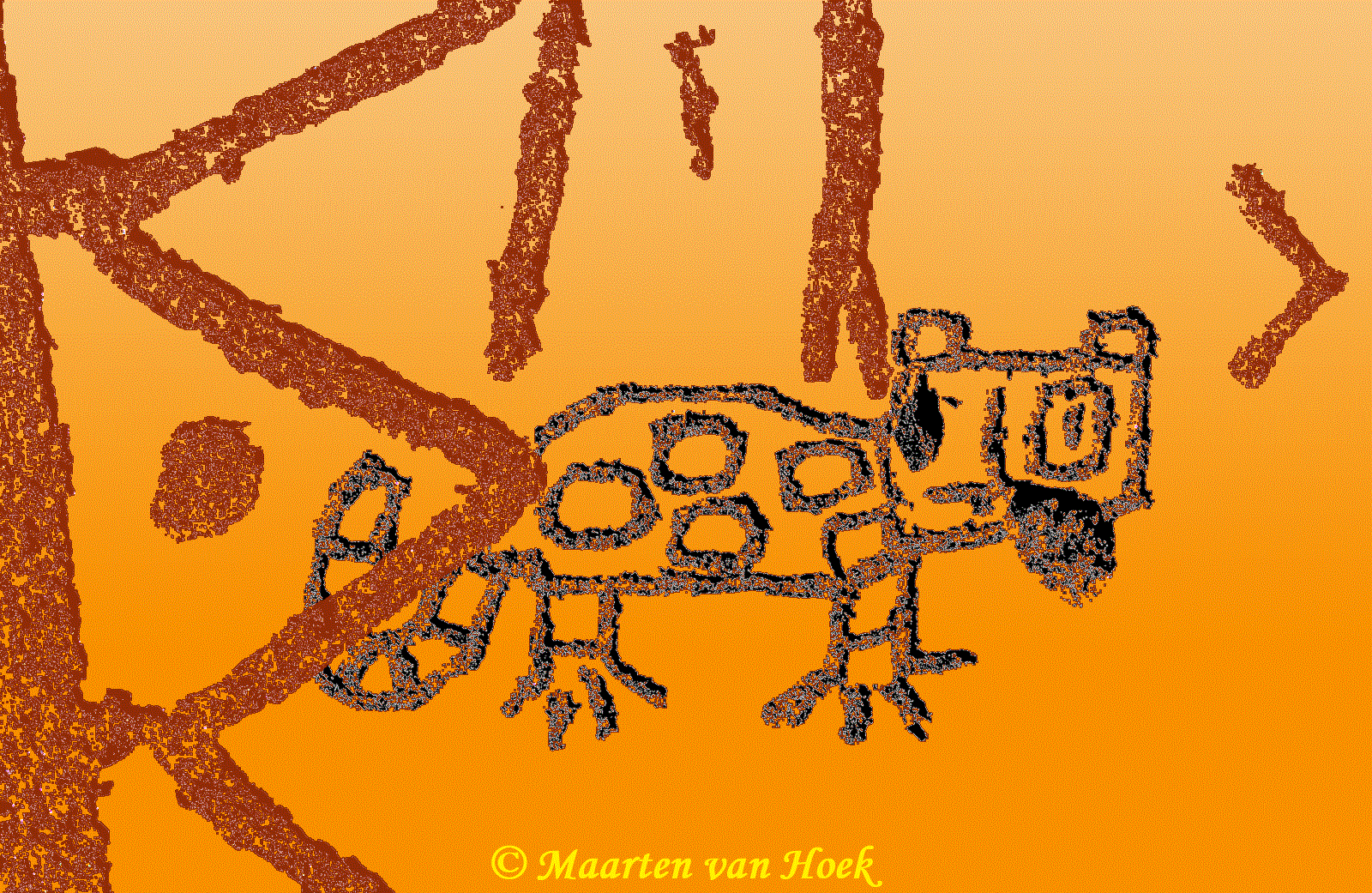
Figure 26. Petroglyph of a Majes feline on Panel TM-Cd-025A superimposed by a large zigzag petroglyph (see also Figure 32). Drawing© by Maarten van Hoek.
*
Further Indications of a Possible Feline Cult
Although it will be hard to prove that there once existed a localised feline cult in the Central Majes Valley, there are – besides the already convincing plethora of feline images – some other indications that may help to authenticate the presence of an ancient feline cult. Although it still is my subjective interpretation, I suggested earlier that felines may have been kept as (sacred) pets (Van Hoek 2003: 158). There are a few indications. Several feline petroglyphs seem to have been depicted with a collar, like the examples on Boulders/Panels TM-Bb-029B, TM-Bc-024, TM-Bf-056, TM-Dx-061, TM-Bc026 (see Figure 16) and possibly TM-Be-018 (see Figure 17). However, especially Panel TM-Ba-014A is of interest in this respect.
More convincing yet still subjective “evidence” involves two of the three feline petroglyphs on vandalised Panel TM-Ba-014A featuring a large petroglyph of an elaborate mummy bundle. Are those three cats (and perhaps the other zoomorphic figures on the panel) symbolic grave goods? One feline seems to have a collar and a short leash attached, but it has also (which is perhaps unique for a Majes cat) a T-shaped element emerging from the top of the head, which possibly is an element symbolising the “trophy” head cord (Figure 27; inset). This may perhaps confirm that cat skulls (like the Uraca cat skull) may once were used as “trophy” heads during death-related rituals. Similar T-shaped elements have been recorded at a “trophy” head petroglyph (not at a cat) on Boulder TM-Cb-014, only 623 m SE of Boulder TM-Ba-014 (Van Hoek 2010: Fig. 37), on Boulder TM-Ex-008, on Panel AP2-051A at Alto de Pitis, 8944 m east of Boulder TM-Ba-014 (Van Hoek 2010: Fig. 36; see also Van Hoek 2018b: Fig. 12 – Petroglyph 2), linked to a feline petroglyph on Boulder PAJ-012 at the rock art site of Illomas, 32 km to the NW of Toro Muerto (see Figure 22), at La Caldera in Vítor and on Boulder SAL-071 at the rock art site of San Antonio in the Locumba Valley, 240 km to the SE (Van Hoek 2010: Fig. 40).
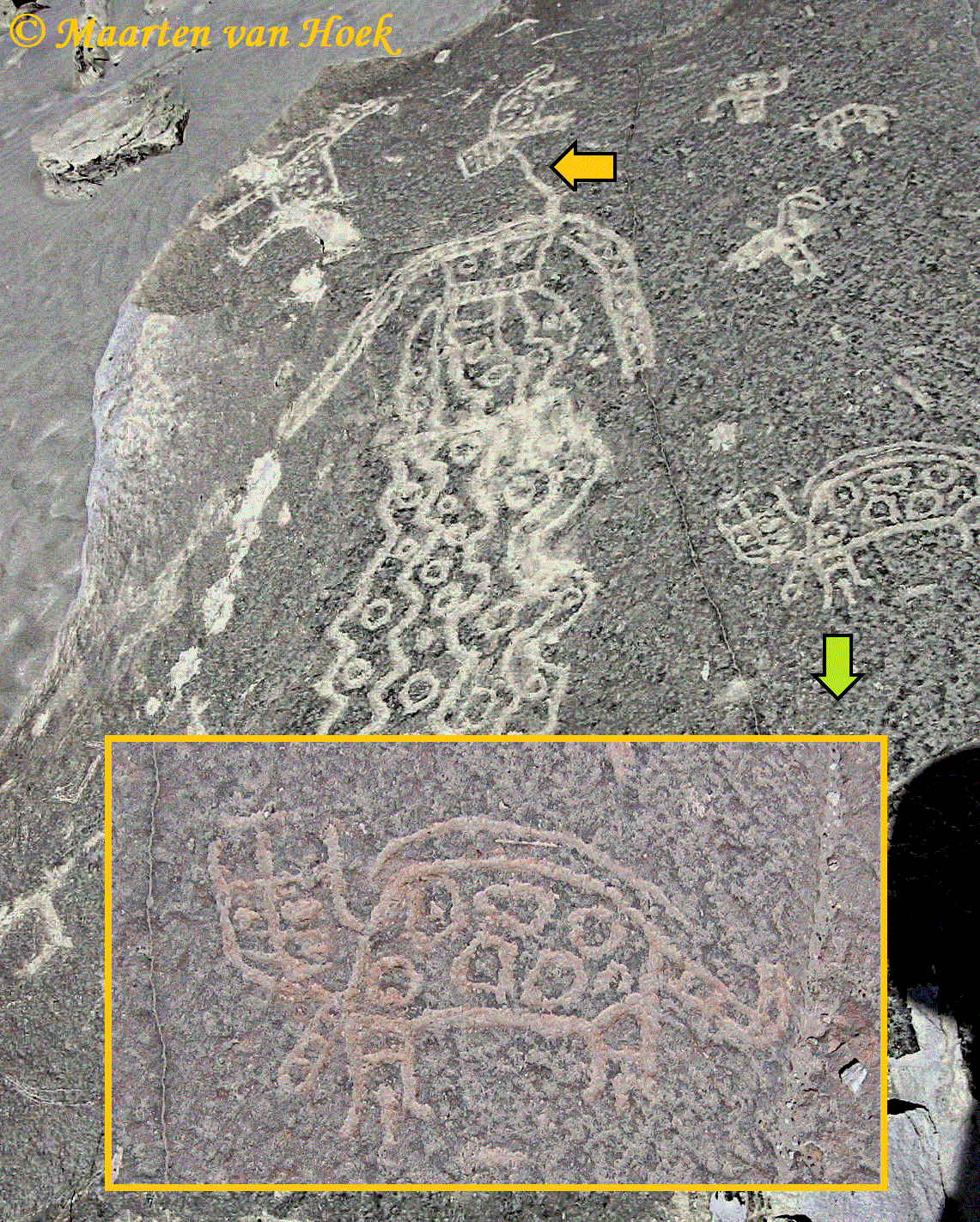
Figure 27. Petroglyph of a Majes feline (golden arrow) physically attached to a large mummy bundle petroglyph on Panel TM-Ba-014A. Inset: Petroglyph of a Majes feline with a possible collar and leash on the same panel. Photographs © by Maarten van Hoek.
But even more telling is the second case on Panel TM-Ba-014A. The conspicuous petroglyph of one of the extremely rare, large and richly decorated images of a mummy-bundle in the Study Area has a line (a leash?) attached to the neck/collar of another feline image (Figure 27; golden arrow). This line (whether a later addition or not) definitely connects a death ritual with feline imagery. It is even possible that also this feline may have served to symbolise a grave good or an offering for the afterlife. This possibility reminds us of funerary practices in ancient Egypt where pharaohs were also interred with their mummified cats, because they believed cats were magical creatures, capable of bringing good luck to the people who housed them. In ancient Egypt cats were also considered to be guardians of the underworld (compare this with cats considered a to be a sacred animal by indigenous Quechua speaking peoples of the ancient Andean world).
Therefore the Uraca feline skull, decorated with red textile in both eye-sockets, might have been worn as a talisman, but it is more likely that it was a death-related (votive?) offering. The red textile may also symbolise death and may possibly even refer to the conspicuous Red Spots in this Sacred Landscape (Van Hoek 2013: 139-140; Figs 142, 145), one of which is located between the Uraca dig and (invisible) Toro Muerto. The Uraca feline remains leave us with an important question: Did the Uraca “pet” die a natural death, or was the cat ritually sacrificed?
In this study it is tentatively suggested that cats may have been ritually sacrificed, even though there is not (yet) any archaeological evidence at all to support this theory. However, certain rock art images from the Central Majes Valley do seem to indicate that felines may have been ritually sacrificed. The most convincing example is the petroglyph of the feline on Boulder TM-Bc-003, which has a distinct, crudely executed “cut” across its neck, as if the head is being severed from the body (Figure 28). The two felines on Boulder TM-Be-018 have grooves across the necks that could represent either collars or possibly cut-marks (see Figure 17). Previously in this study I tentatively suggested that those two felines (that have no eyes, just randomly arranged dots) “look through the veil between the mundane and the spiritual realm”. A similar, but fainter “cut” is seen at one of the two felines on Boulder AP2-049, while a later groove superimposes the tails of the two felines (see Figure 30). Importantly, the facial features of the “severed” cat on Boulder AP2-049 also seem to have been obliterated at a later stage, which brings me to suggest a third ritual that may confirm the existence of a feline cult, or rather, the end of the cult.
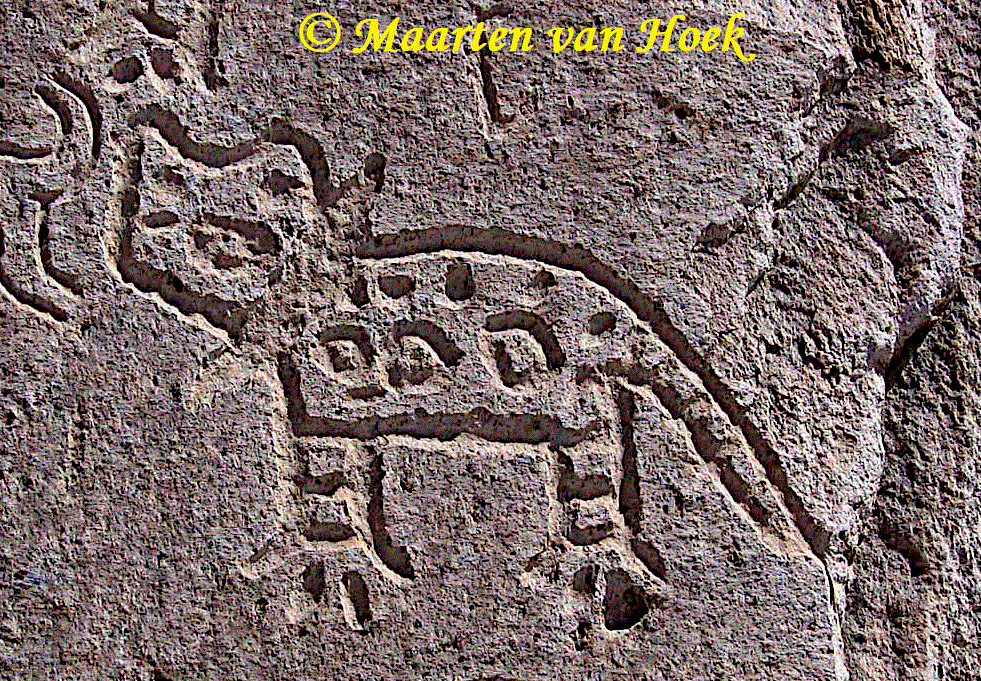
Figure 28. Petroglyph of a Majes feline with possibly a cut-mark across the neck. Photograph © by Maarten van Hoek.
A most characteristic feature of the rock art of the Central Majes Valley is that many images have intentionally been obliterated, either very carefully or rather crudely (Van Hoek 2005). In most cases it was the head that was the target of the obliteration, but also legs and other body parts have been affected by this ritual practice. Although snakes, Majes “Dancers”, birds and quadrupeds (like camelids) were the target of intentional obliteration, it proves that especially felines “lost their head”, or rather, their facials were (often only partially) obliterated. Fine examples concern two of the four feline petroglyphs on Panel TM-Dx-010C (Figure 29; petroglyphs 3 and 4), examples on Boulders TM-Sw-002, TM-Da-024, TM-Bf-039, TM-Bf-041 and TMP-0152, the already discussed example on Boulder AP2-049 (Figure 30) and the two felines on Panel AP3-102A (Figure 31). In one case – on Panel TM-Bf-048A – it proves that the whole body of a feline petroglyph has been obliterated (see Figure 1). To explain this practice I once argued that “the careful removal of especially the facial details must have been most meaningful and might have conveyed a very specific emotion. This sentiment might be an articulation of discontent about the desired effects of the imagery.”(Van Hoek 2005: 80).
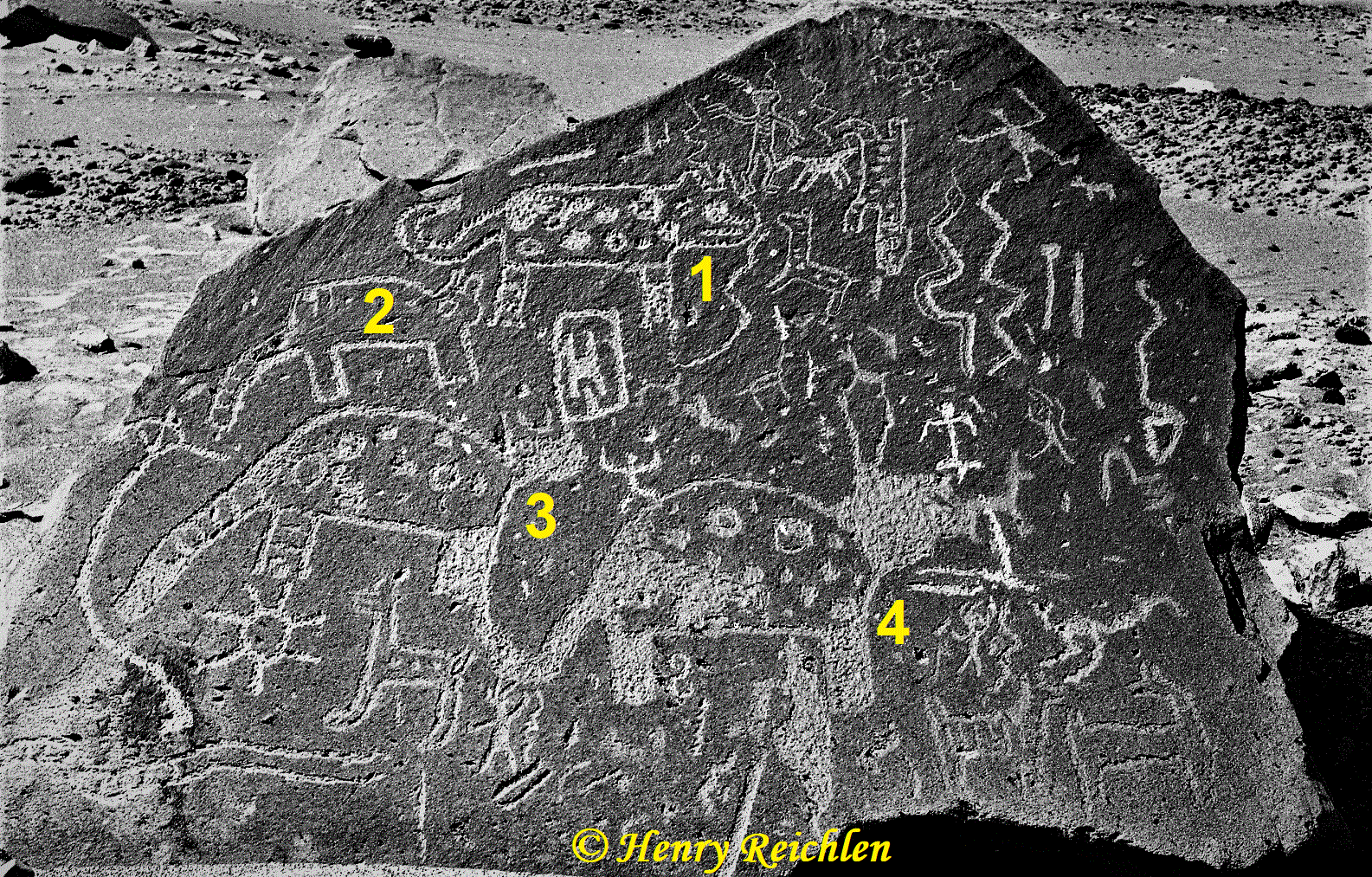
Figure 29. Petroglyphs of four Majes felines on Panel TM-Dx-010C, two having body parts ritually obliterated. Photograph © by Henry Reichlen (stored at the Musée de Quai Branly, Paris, France; 1965) enhanced by the author.
As far as I know, intentional and ritually charged obliteration has only been reported in the rock art of the Central Majes Valley. Moreover, instances of feline-obliteration are unevenly distributed across the terrain; there are no marked concentrations. On the east bank examples of feline-obliteration are found from Boulder AP2-049 to Boulders AP4-037 and AP4-041 (covering a distance of about 2700 m), while on the west bank obliteration of feline imagery occurs in an area from Boulder TM-Dx-010 to Boulder QBP-Nz-001 at Quebrada Pampa Blanca (a distance of 6437 m). Boulder QBP-Nz-001 is moreover special as it features a single “trophy” head, a “Carcancha” (a ritually charged Skeleton-Anthropomorph) carrying a “trophy” head (Van Hoek 2020), a possibly Formative Period profile feline petroglyph (golden arrow in Figure 5), a “twisted” head feline (dark green arrow in Figure 5), a possibly unfinished “trophy” head (yellow arrow in Figure 5), an unfinished (incised) feline petroglyph (orange arrow in Figure 5) and – finally – the petroglyph of a feline of which the head and legs have been obliterated (light green arrow in Figure 5). This panel may therefore illustrate the beginning and the end of the feline cult in the Central Majes Valley.
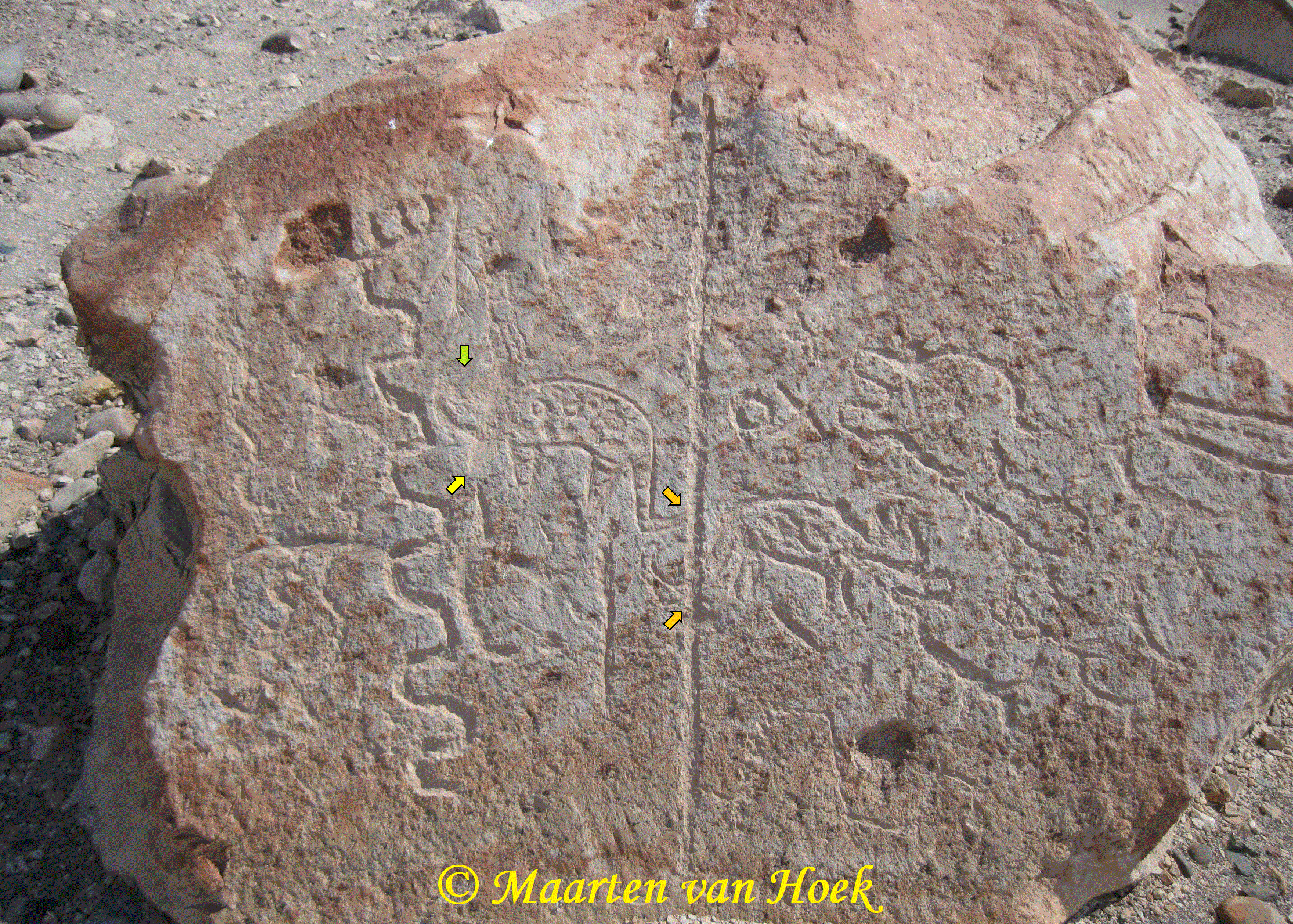
Figure 30. Petroglyphs of two Majes felines on Boulder AP2-049 (one with obliterated head and possible cut-mark across the neck), both having their tails superimposed. The right-hand example has no facials (unfinished, obliterated or intentionally omitted?). Photograph © by Maarten van Hoek.
However, in my opinion also instances where later petroglyphs superimpose (and thus partially obliterate, though unintentionally) feline imagery and the several instances of unfinished feline petroglyphs may mark the end of the feline cult in Majes. Although most unfinished feline petroglyphs show (only) the head (Figures 33A and B), there are instances where the head is missing, for instance on Panel TM-Cd-025A, where two petroglyphs of felines are indicated by the spots (Figure 32). In one case the outlined, rectangular head and the spots are drawn (but not the outline of the body), while the other example only features the spots, not the head, nor the body-outline (on the same panel is a feline petroglyph superimposed by a large zigzag; see Figure 26). The imagery on this boulder thus seems to illustrate the end of the purported feline cult in Majes in two ways (superimposition and abandonment). Also the unfinished feline petroglyph on Boulder TM-Ab-007 literally and metaphorically “lost its head” and thus its symbolism (Figure 33).
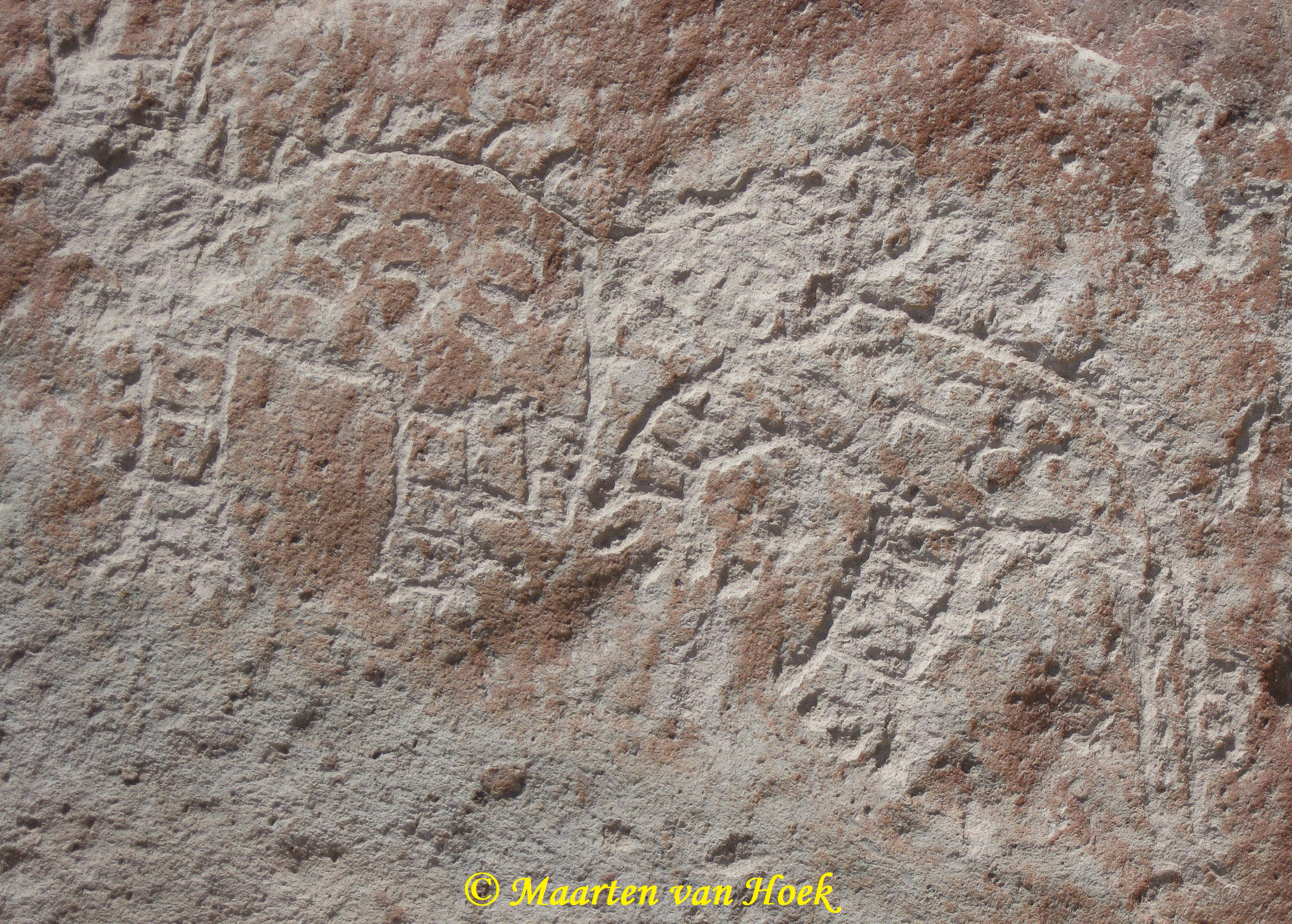
Figure 31. Petroglyphs of two Majes felines on Panel AP3-102A, each with an obliterated head. Photograph © by Maarten van Hoek.
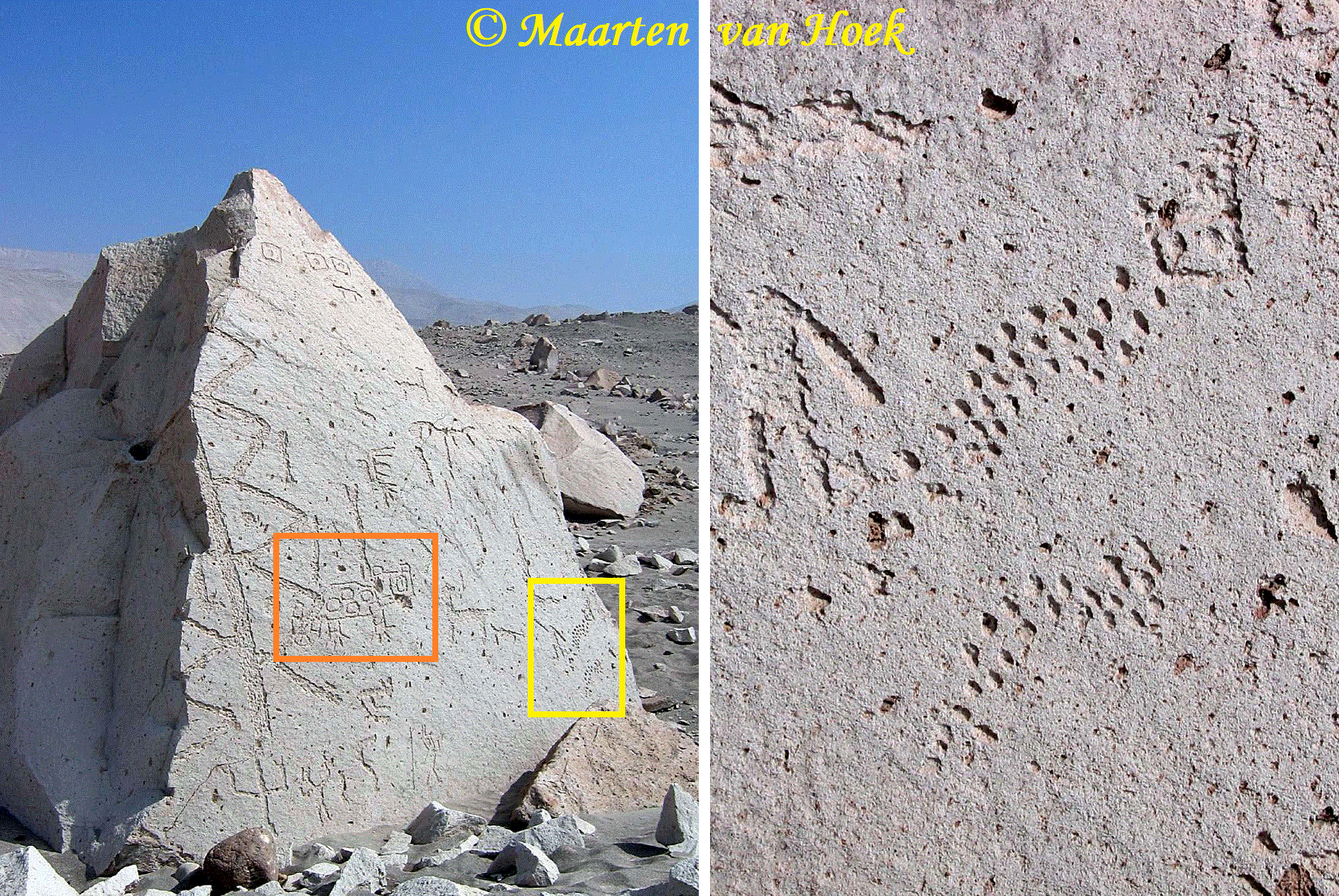
Figure 32. Petroglyphs of two unfinished Majes felines on Panel TM-Cd-025A (yellow frame) and the position of Fig. 26 (orange frame). Photographs © by Maarten van Hoek.
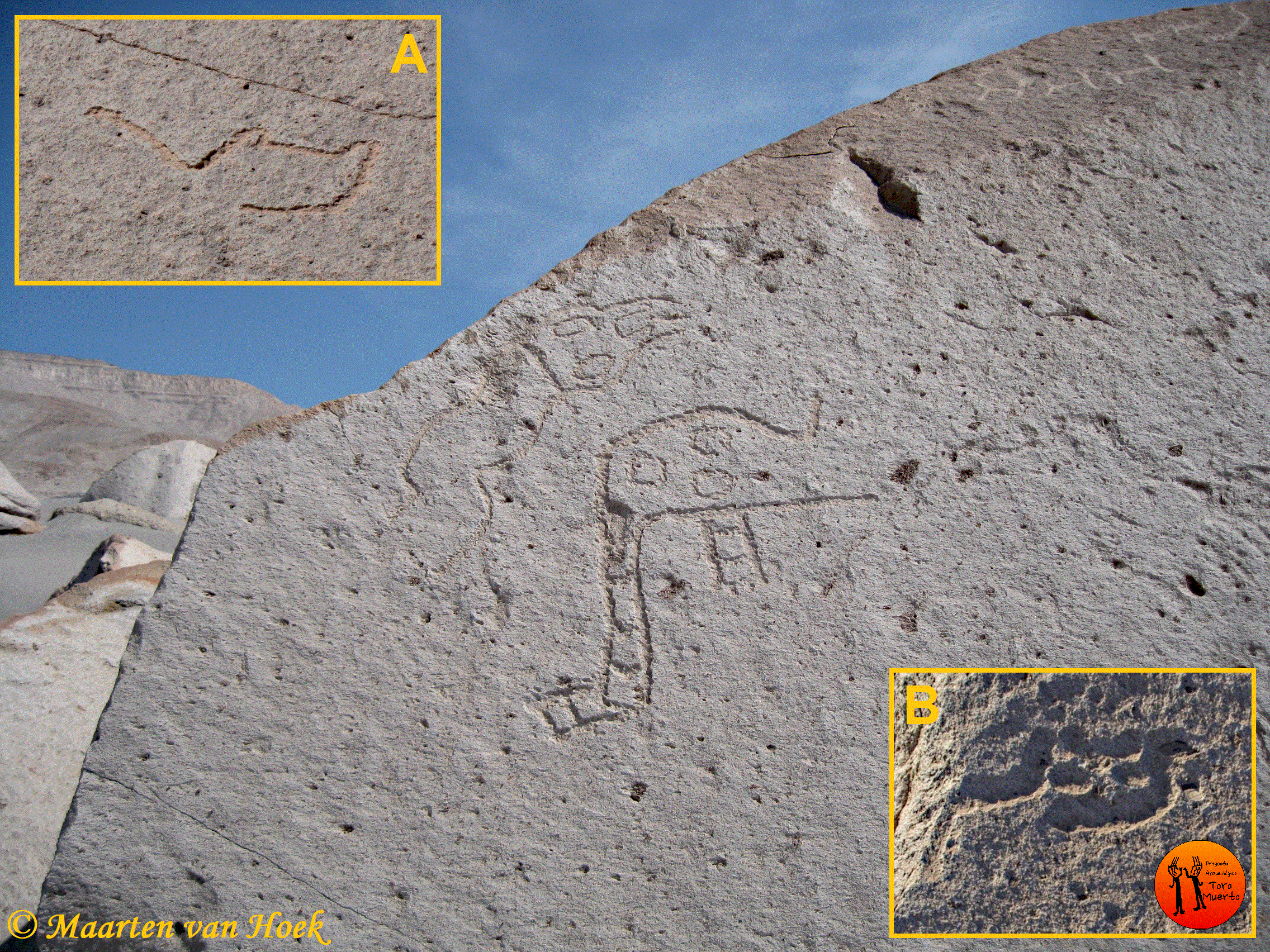
Figure 33. Petroglyph of an unfinished Majes feline on Boulder TM-Ab-007. Inset A: unfinished Majes feline petroglyph on Boulder TM-Ab-014. Photographs © by Maarten van Hoek. Inset B: unfinished Majes feline petroglyph on Boulder TMP-778. Photograph © by Karolina Juszczyk of the Proyecto Toro Muerto (enhanced).
CONCLUSIONS
In view of its enormous amount of rock art it is obvious that the Central Majes Valley once constituted an important and influential cultural nucleus without, however, having a ceremonial centre comparable with Cahuachi in the Nasca area. In fact there is no evidence that there once existed a similar temple complex in the Majes Valley. Therefore, it may be held that the impressive rock art sites of Toro Muerto and Alto de Pitis in fact served as open-air temples for a much larger area, in which the role of the Sacred Mountain of Nevado Coropuna (the highest volcano in Peru) was fundamental (Van Hoek 2013; 2018a; 2020). Those rock art sites served, like Cahuachi, as ceremonial centres for locals and pilgrims alike, possibly for many hundreds of years. This resulted in several layers of often exclusive imagery expressing different worldviews and/or reactions to environmental changes (for instance droughts). The rock art of the Central Majes Valley not only has an exclusive plethora of feline petroglyphs, also the images of the still enigmatic Majes “Dancer”, the “Spitter”, the Rectangular Bird, the impressive Zigzag-Stripes and the “Feathered Mammal” are almost entirely confined to this relatively small area.
Although most major rock art sites in Arequipa have images of felines, this study demonstrated that especially the Central Majes Valley has an unexpected overabundance of feline petroglyphs. Only the rock art site of Illomas to the NW of Toro Muerto also has more felines than expected (no less than 78 examples in, however, a much smaller area). The many different designs of Majes felines (Figure 34) also seem to indicate that they belong to several chronologically separate layers; a small group of fully laterally depicted felines being the oldest. In this respect this study tentatively suggests that possibly the Paracas introduced a kind of feline cult to the Central Majes Valley, which was in turn adapted by the Majes to fit their own worldview. An early origin of such a feline cult may be evidenced by some specific petroglyphs, like the ancient MSC-Style profile feline on Boulder QPB-Ny-001 at Quebrada Pampa Blanca. However, also the possible termination of the purported feline cult in Majes may be illustrated on this boulder, as there also are an unfinished example and a partially obliterated example (see Figure 5).
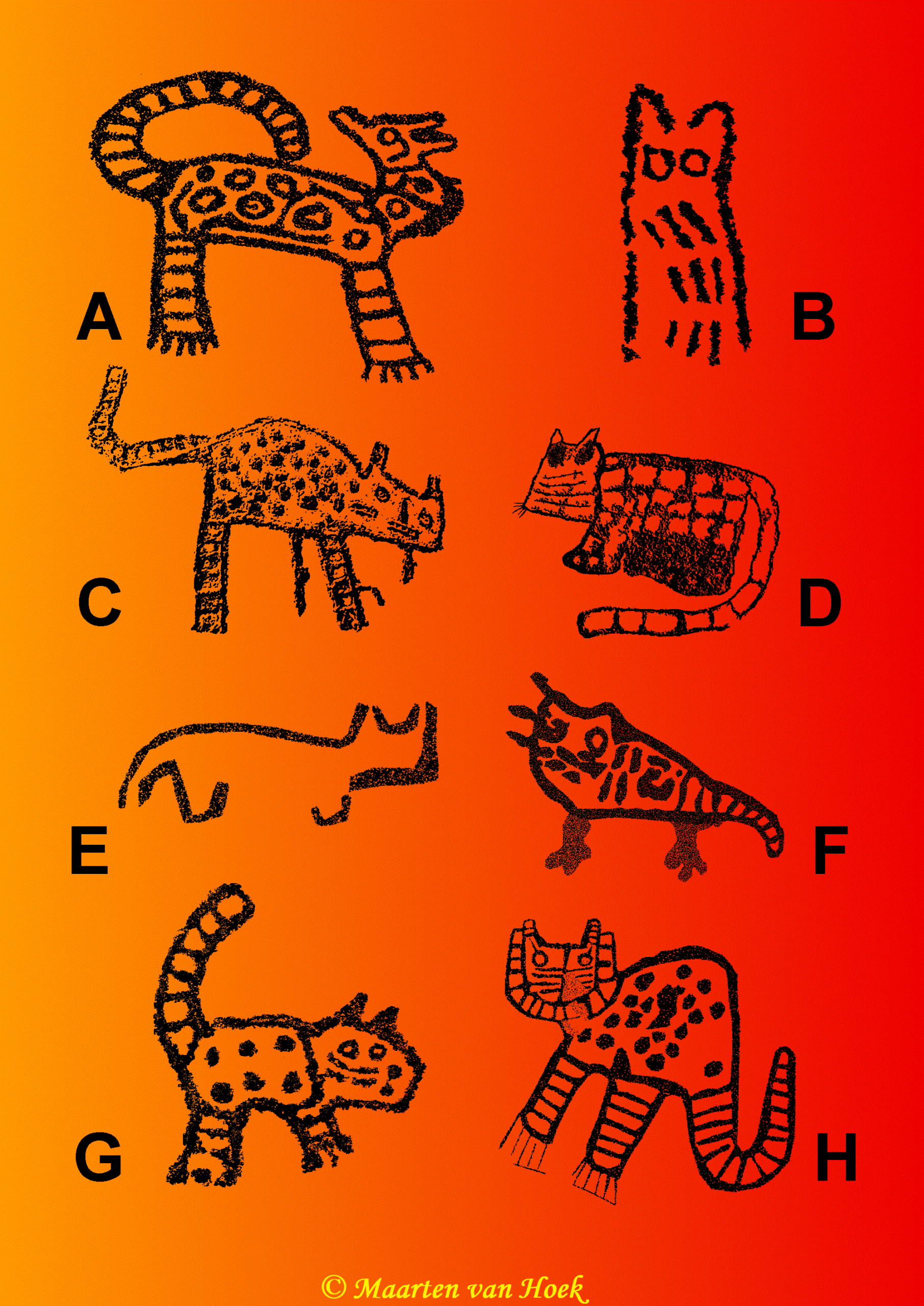
Figure 34. Petroglyphs of felines from Toro Muerto and Alto de Pitis (F and H) at different scales. Drawings © by Maarten van Hoek.
Finally, although all my arguments and suggestions proposed in this paper seem to be convincing, I must emphasise that my hypotheses are just what they are, tentative theories. Further research regarding Majes prehistory is strongly recommended, but when linking the finds in archaeological excavations with the rock art of an area, one has to be very cautious, especially when one has no profound knowledge of one of those two (much differing!) disciplines, like me lacking the expertise of archaeological excavations.
Note 1: When preparing this paper in 2021 I came across a fine photograph of the Uraca “Trophy” Head Cat on the internet. The URL was: http://bethkoontz.com/wp-content/uploads/2014/08/P6300046.jpg. However, checking the same URL in 2023 it proved to yield an unwanted result (and no photo). Also the webpage of Beth Koontz (where a similar photograph was once published by her) was untraceable. Also an article in the National Geographic about the Uraca Dig could not be found anymore. The only photo of the Uraca “Trophy” Head Cat that I could trace in 2023 was found at: https://arkeofili.com/wp-content/uploads/2015/10/pampas4.jpg. I hope this picture will still be available when accessing this URL. If not, you may care to download the report by Scaffidi and Garcia Márquez (2014/2015) and look for Figs 124 and 125 (PDF available at Academia).
*
Acknowledgements
I am grateful to Karolina Juszczyk of the Proyecto Toro Muerto (Instituto de Estudios Ibéricos e Iberoamericanos, University of Warsaw, Poland: 2015-2017) for her assistance. She not only provided several photographs (some of which have been used in this paper), but also gave useful information about Toro Muerto rock art. The author would also like to thank James Posso Sánchez from Arequipa for his kind permission to use and publish his photographs. However I am the only one responsible for the graphical and textual information in this paper.
References
Birge, A. T. and C. K. Scaffidi. 2015. Manufacturing Trophy Heads in the Middle Majes Valley. Invited poster in the symposium “Excavations at Uraca, a Middle Horizon (600 – 1000 AD) Cemetery in the Middle Majes Valley, Arequipa, Peru”. The 80th Annual Meeting of the Society for American Archaeology, San Francisco, California.
García Soto, R. 2013. Geoglifos Paracas de la Costa Sur: Cerro Lechuza y Cerro Pico. Boletín de Arqueología PUCP. Vol. 17; pp. 151 – 168.
Jennings, J., M. van Hoek, W. Yépez Álvarez, S. Bautista, R. A. San Miguel Fernández and G. Spence-Morrow. 2019. Illomas: the three thousand year history of a rock art site in Southern Peru. Ñawpa Pacha, Journal of Andean Archaeology. Vol. 39-2; pp. 1 – 31.
Linares Málaga, E. 1999. Arte Rupestre en Sudamerica Prehistoria. Universidad Nacional Mayor de San Marcos. Lima, Perú.
Núñez Jiménez, A. 1986. Petroglifos del Perú. Panorama mundial del arte rupestre. 2da. Ed. PNUD-UNESCO – Proyecto Regional de Patrimonio Cultural y Desarrollo, La Habana.
Scaffidi, B. K. 2015. Human and feline trophy heads unearthed in Peru. In: Peru this Week. URL.
Scaffidi, B. K and M. Garcia Márquez. 2014/2015. Informe Final Para el Ministerio de Cultura: Proyecto Arqueológico Uraca, Valle de Majes, Temporada 2014. Lima, Perú. PDF available at Academia.
Ríos Valladares, P. D. 2006. Repertorio de personajes relacionados a la caza y manipulación de cabezas trofeo en la iconografía Paracas Tardío y Nasca Temprano. Arkeos. Vol. 1-2; pp. 20 – 41.
Van Hoek, M. 2005. Toro Muerto, Peru: Possible Prehistoric Deletion of Petroglyph Details. Adoranten 2005; pp. 73 – 80. Underslös, Sweden.
Van Hoek, M. 2010. ‘Trophy’ heads in the rock art of the Majes Valley, Peru: exploring their possible origin. In: Rupestreweb.
Van Hoek, M. 2011a. The Chavín Controversy – Rock Art from the Andean Formative Period. PDF available only at ResearchGate.
Van Hoek, M. 2011b. Cerro Pano: A violated and endangered rock art site in Southern Peru. In: Rupestreweb.
Van Hoek, M. 2013. The Carcancha and the Apu. Rock Art in the Death Valley of the Andes. PDF available only at ResearchGate.
Van Hoek, M. 2018a. Formative Period Rock Art in Arequipa, Peru. An up-dated analysis of the rock art from Caravelí to Vítor. PDF available only at ResearchGate.
Van Hoek, M. 2018b. The Supernatural Flight of the ‘Trophy-Bird’ of Alto de Pitis, Majes Valley, Peru. In: TRACCE – Online Rock Art Bulletin, Italy.
Van Hoek, M. 2019. The Book of Bows – The Archer in Desert Andes Rock Art. Oisterwijk, Holland. Available as PDF only at ResearchGate.
Van Hoek, M. 2020. New “Carcancha” Petroglyphs in Arequipa, Peru. Illustrating the “Road to Coropuna”. In: TRACCE – Online Rock Art Bulletin, Italy.
Van Hoek, M. 2022. The Majes “Dancer” – Analysing an Enigmatic Icon. Book available as PDF only at ResearchGate. Revised version.
Van Hoek, M. 2023. The “Camelines” of Toro Muerto; Majes Valley, Peru. In: TRACCE – Online Rock Art Bulletin, Italy. Revised version.
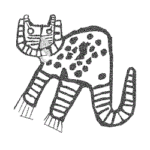














Leave a Reply